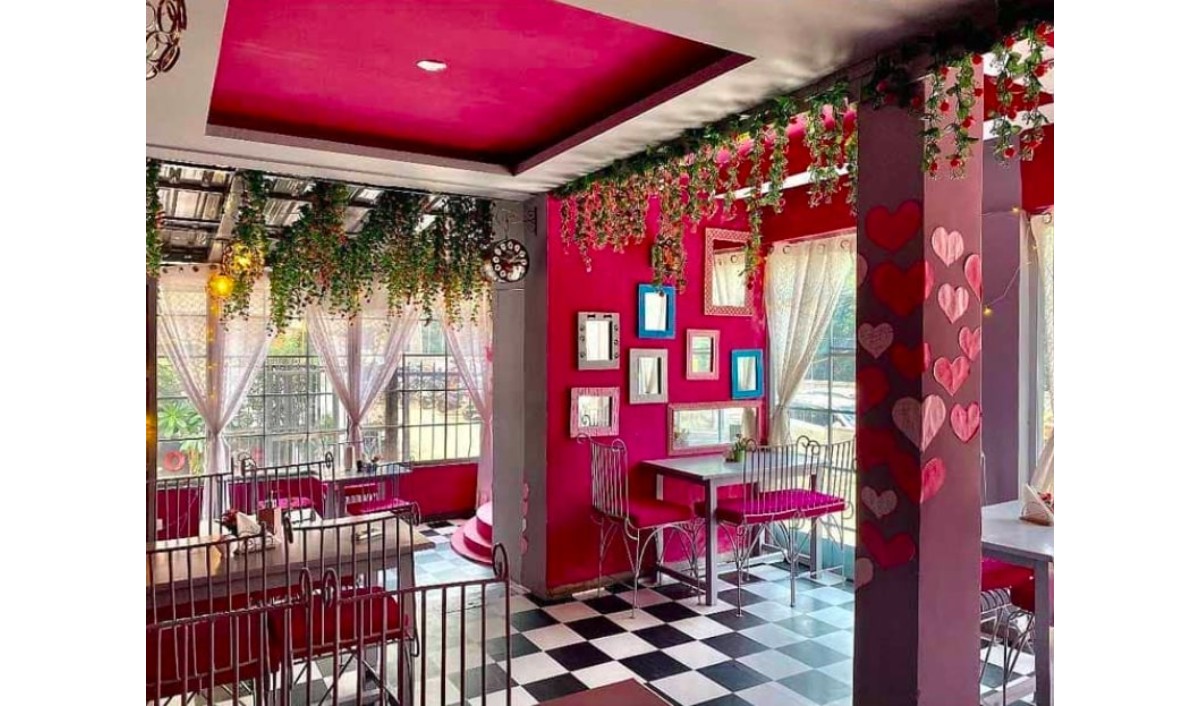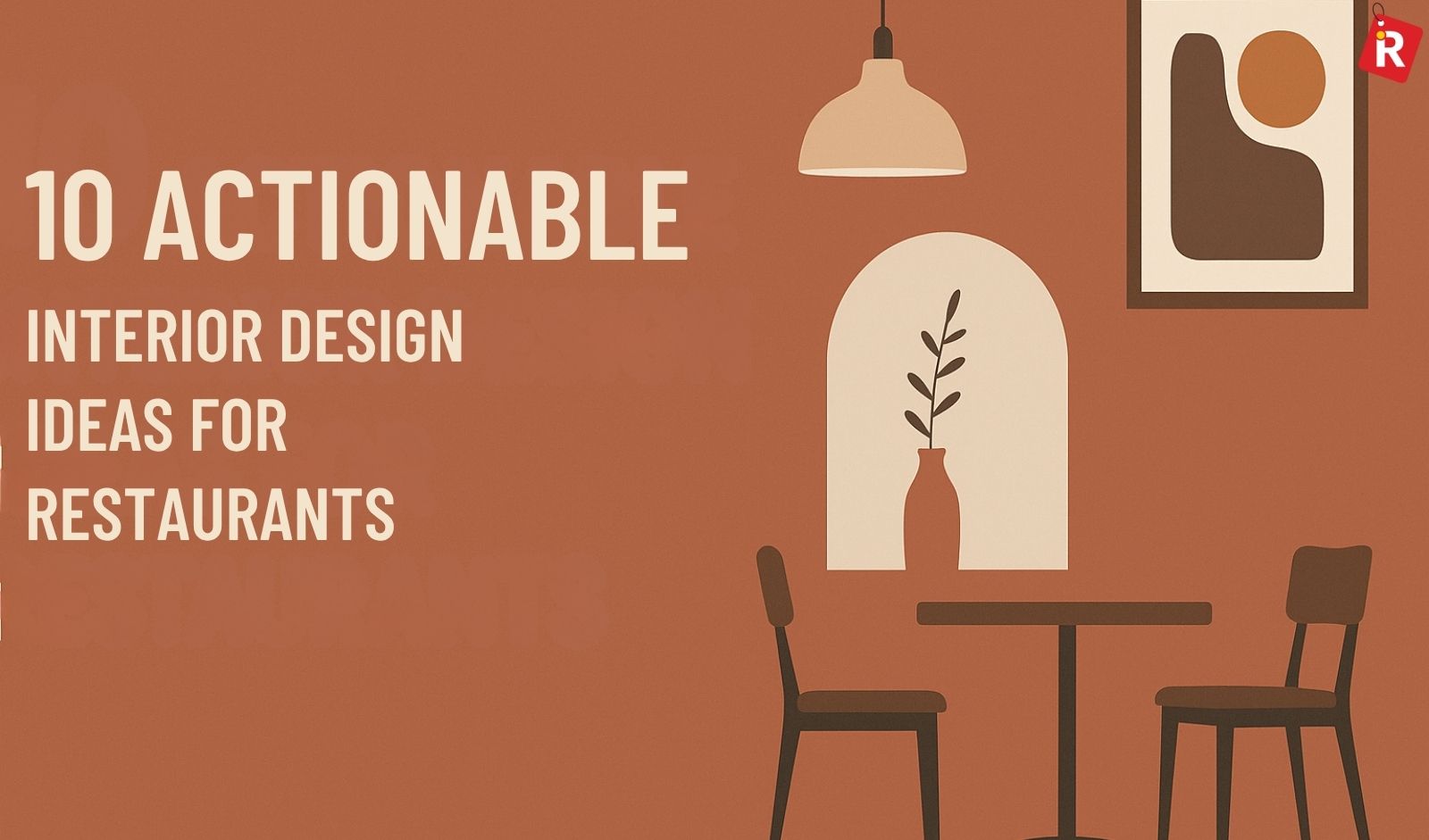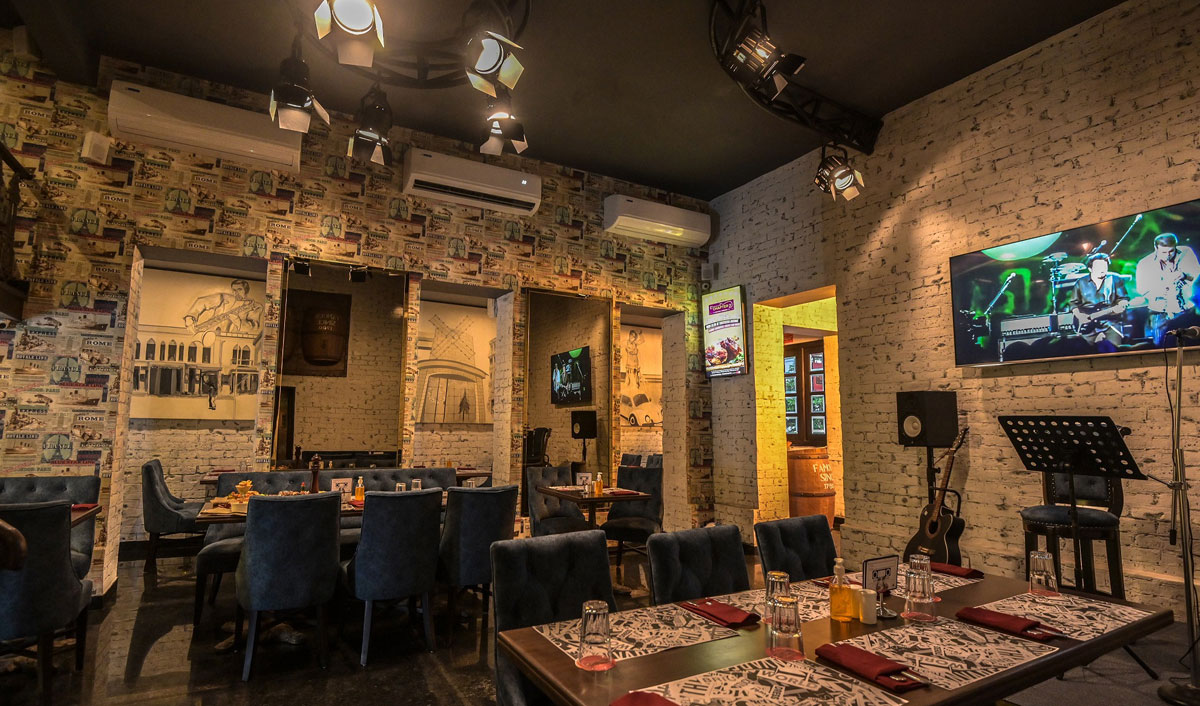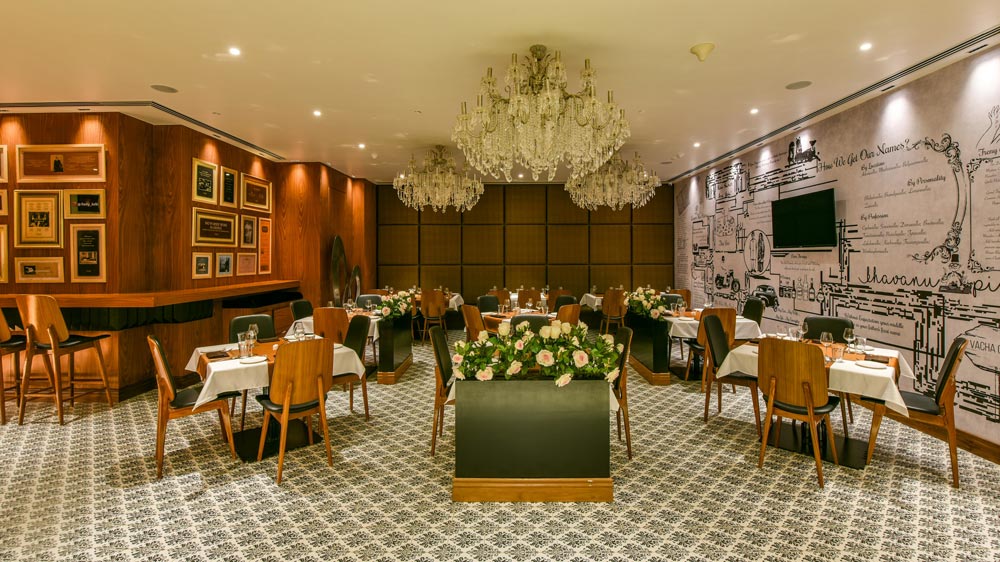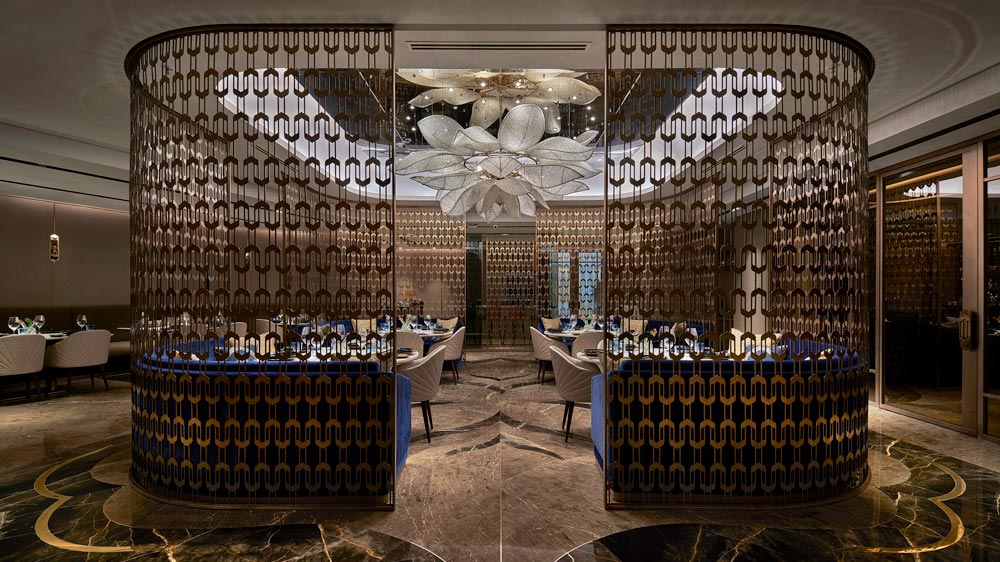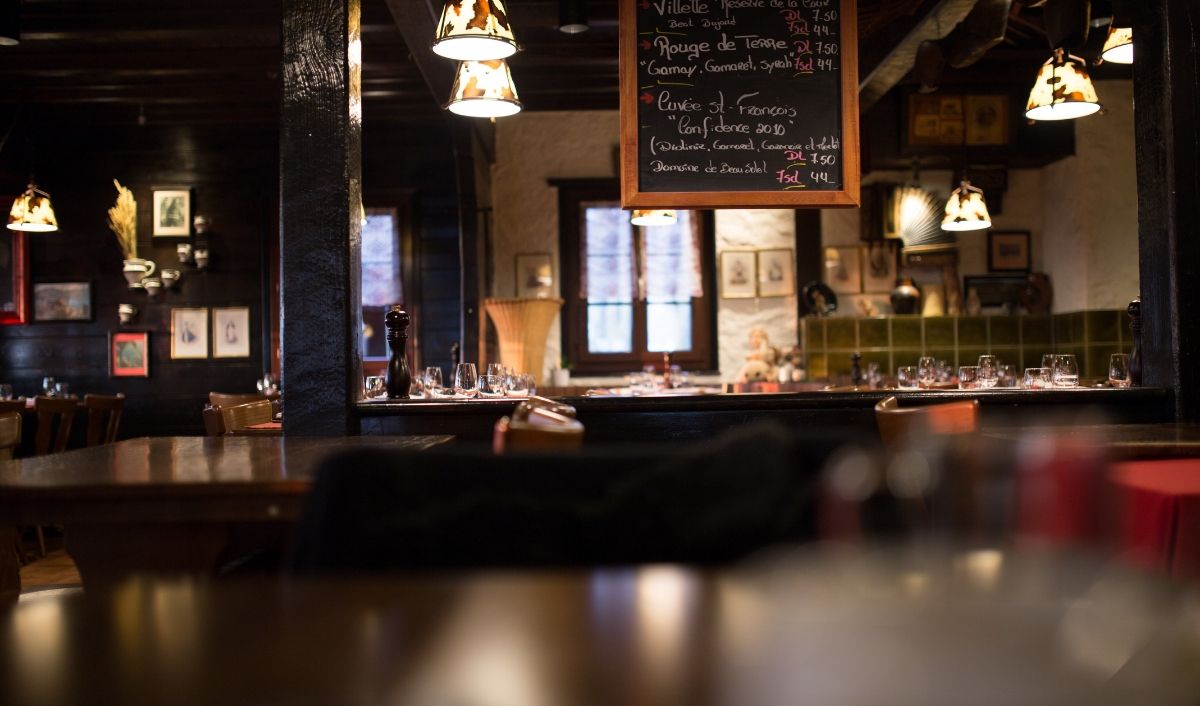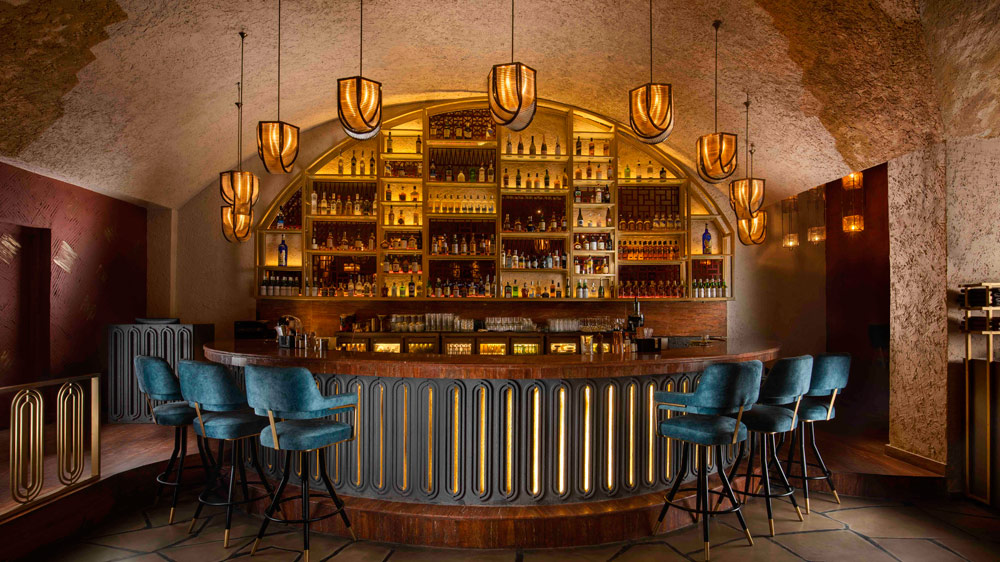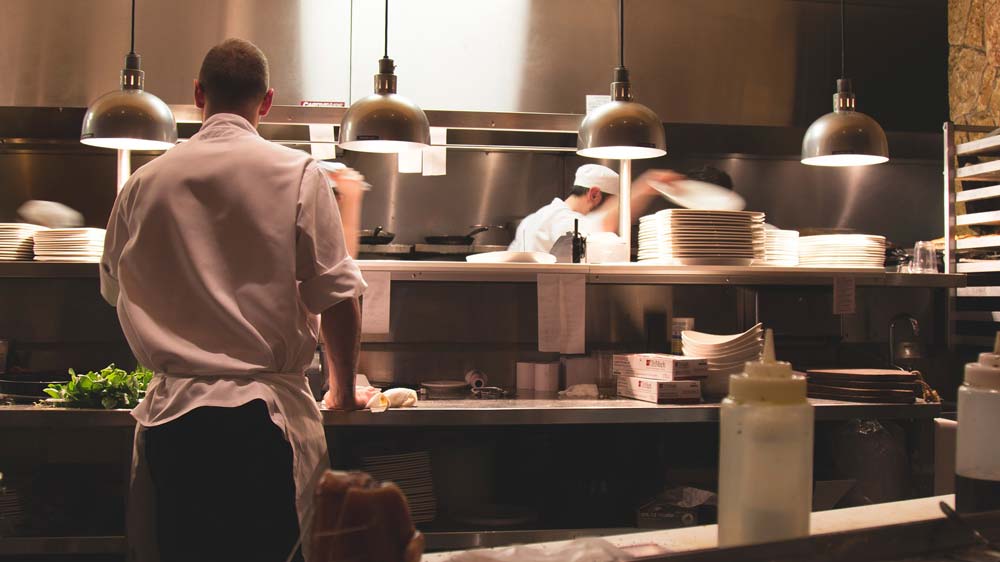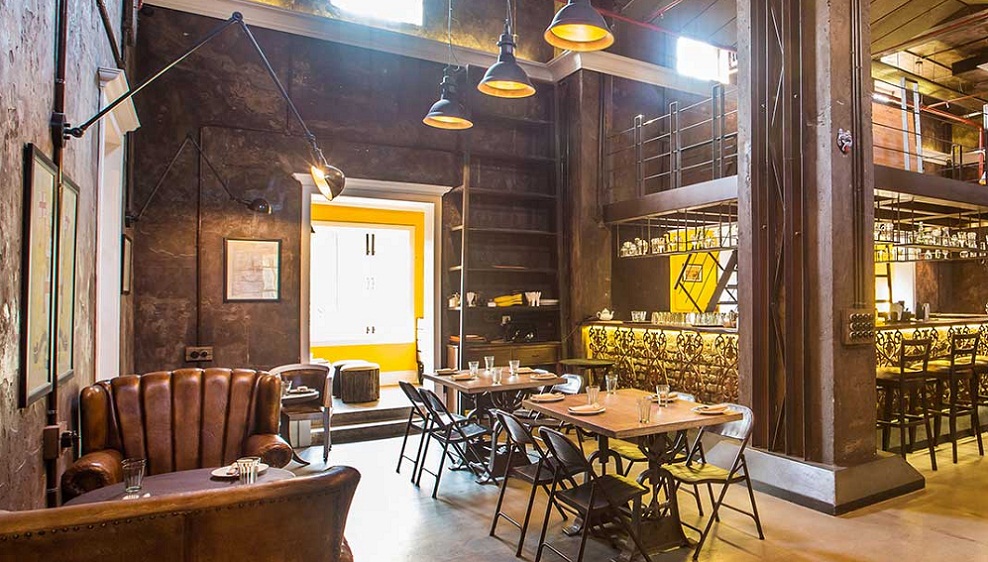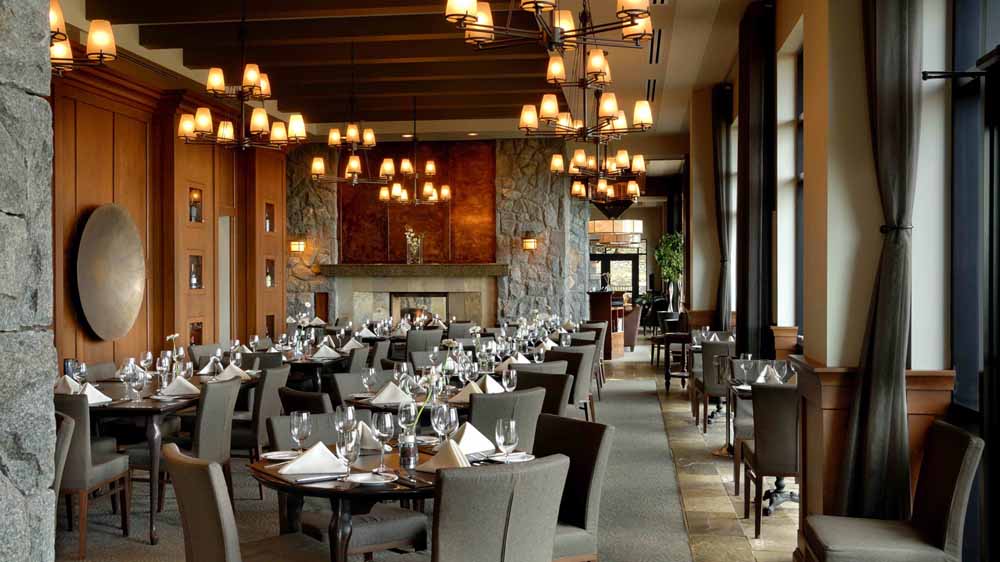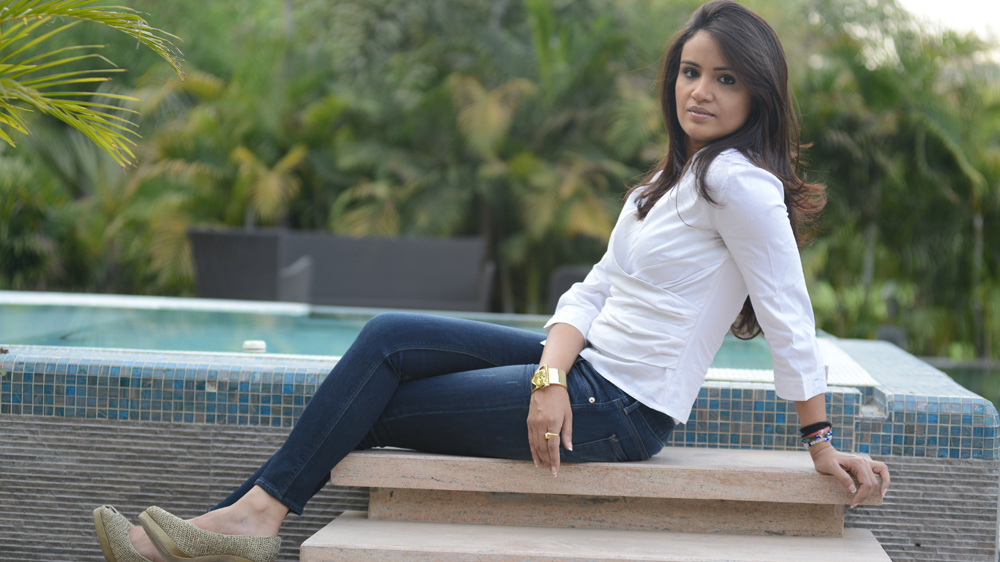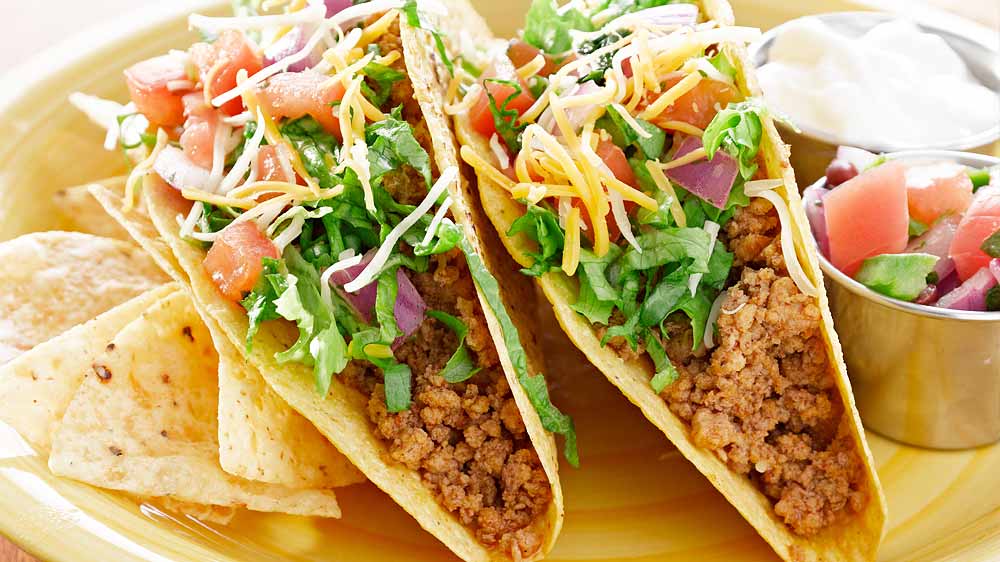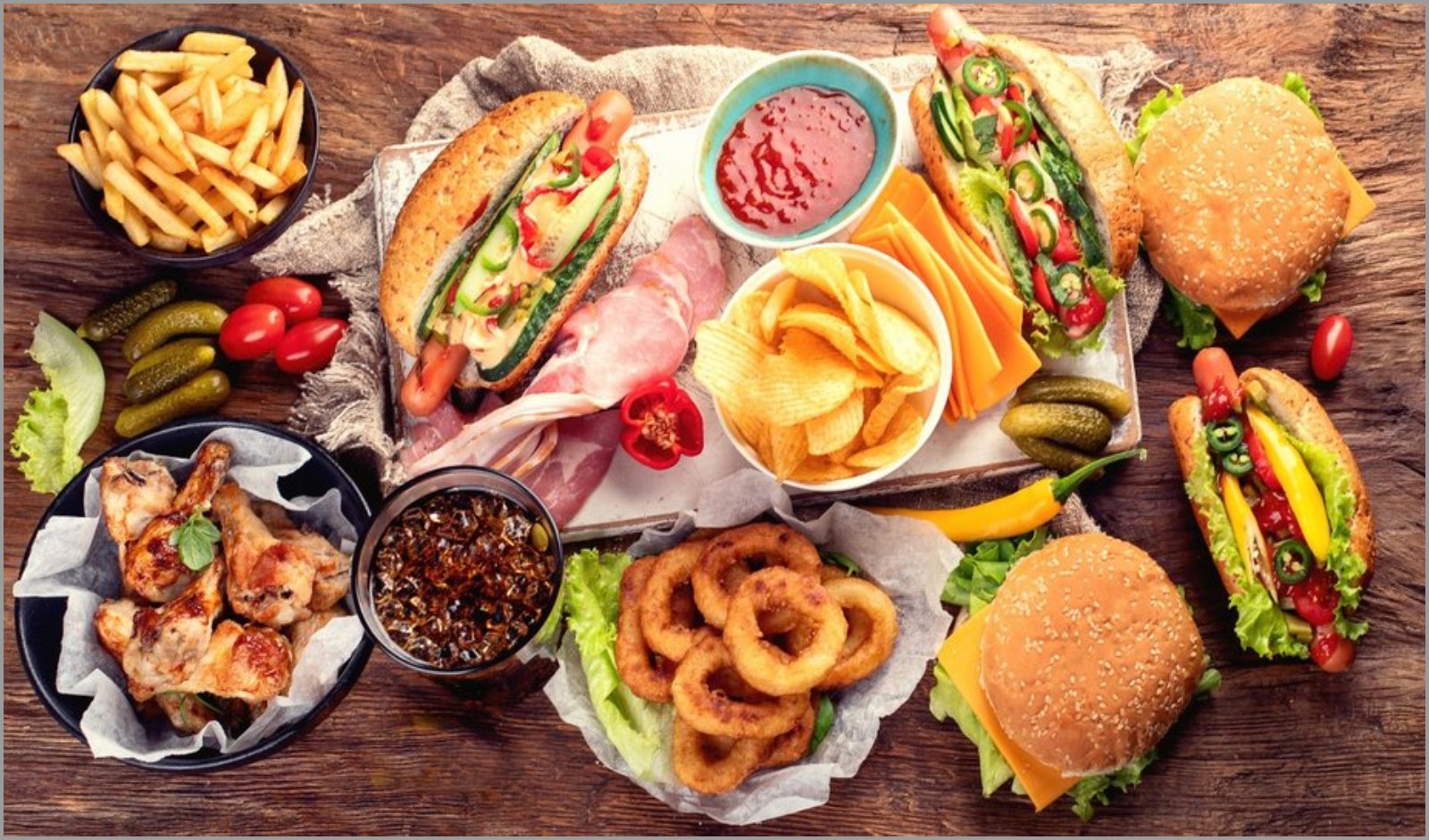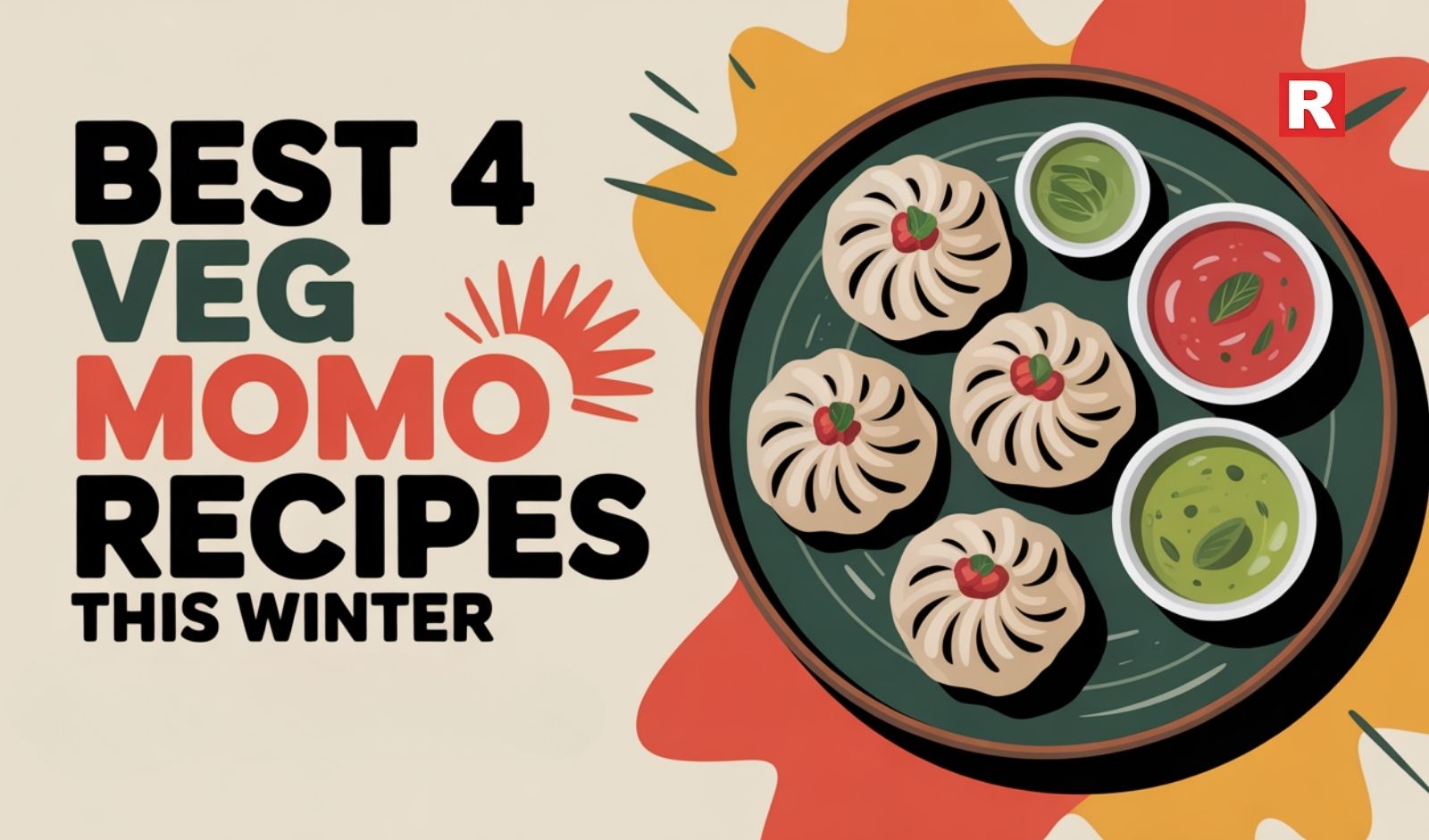
Picture this: You step into a restaurant, the tantalizing aroma of your favorite cuisine wafts through the air, and your anticipation builds. Yet, before you even catch a glimpse of the menu or the chef's creations, something else captures your senses, the colors that surround you. They are not just mere decorations; they are the invisible artists setting the stage for your dining experience.
In the world of restaurant design, where every element counts, colors play a pivotal role in creating the perfect ambiance. The choice of colors sets the stage for the dining experience, impacting everything from mood and appetite stimulation to brand identity and cultural authenticity. “Just as a chef carefully selects ingredients to craft a delightful meal, designers meticulously choose colors to set the mood and enhance the dining experience. Colors are a vital part of a restaurant's brand identity.,” Dhruva Kalra from I'm D'sign stated.
Setting the Tone
Colors are powerful communicators of emotion and atmosphere. When you enter a restaurant, the first thing that strikes you is the color palette. Warm and earthy tones like browns and oranges can create a cozy and intimate setting, ideal for a romantic dinner. In contrast, vibrant reds and yellows can energize a space, making it perfect for a lively, social gathering. The choice of color sets the tone for the entire dining experience.
Spread over 5,100 square feet over two levels, The Earthy Woven Café has been designed by Suhani Lal Sanghra, principal architect, Sparc Design using hues of beige and light wood with splashes of saffron orange and green from the foliage.
The architect team decided on a neutral and earthy theme with cane, wicker, and clay to match the vegetarian food concept. “The orange pop of colour has been used keeping in mind its relevance to the context often associated with warmth and comfort, thereby enhancing the overall experience. Orange is known to stimulate the senses and increase appetite; it also helps with branding and a strong visual recall,” says Sanghra.
Brand Identity
Restaurants, like any other business, seek to establish a unique brand identity. Colors are integral to this process. They serve as the visual representation of the restaurant's personality and values. For example, a rustic farm-to-table eatery may employ earthy greens and browns to emphasize its commitment to nature and wholesome dining, while a modern fusion restaurant might opt for sleek blacks and metallic accents to convey innovation and sophistication.
“Think of McDonald's and its iconic red and yellow color scheme. It's not just about decorating; it's about establishing a visual identity that customers associate with your establishment. The right colors can leave a lasting impression and make your restaurant instantly recognizable,” Kalra added.
Appetite Stimulation
Believe it or not, colors can influence your appetite. Warm colors like reds and oranges are known to stimulate hunger and make food appear more appealing. This is why many fast-food chains use these hues in their logos and interiors. On the other hand, cooler tones like blues and greens can have a calming effect, which might be more suitable for a fine dining restaurant where patrons savor each bite.
For instance, studies have shown that the color red can increase heart rate and create a sense of urgency, which can lead diners to eat faster. On the contrary, soft blue hues can slow down eating, encouraging a more relaxed and indulgent dining experience.
A newly-opened chic cafe, Sista’z is a go-to place for all the millennials. Amalgamating all the fairy-tale vibes and infusing deep rich pink colour into their ambience, this cafe offers a not-so-ordinary feel. They serve a plethora of cuisines like Italian, Continental, Chinese and some must-tries here include their best-sellers such as Beer Butter Onion Rings, BBQ Chicken Wings and Mac & Cheese Casserole Pasta, all with a pink hue.
Space Perception
Colors also have the power to alter our perception of space. Dark colors can make a room feel cozy and intimate, while light colors can open up a space and make it appear more airy and spacious. In smaller restaurants, light and neutral colors are often used to give the illusion of a larger dining area, making guests feel less cramped.
For example, if a restaurant has limited square footage, employing a light color scheme on the walls, furniture, and even the ceiling can create a sense of openness. This not only enhances the comfort of diners but also helps maximize the utilization of available space.
Situated in the centre of the city’s Art Deco district—Marine Drive, Nksha is an inviting North Indian eatery. Conceptualised by Shruti Jalan and Neesha Alwani of ns*a Architecture & Interiors, the restaurant is reminiscent of an old Bombay speakeasy. “Nksha’s interiors showcase plush fabrics, majestic arches, brass accents, ornate chandeliers, repetitive patterns in brass and gold, and an arresting colour combination of coral and forest green. Additionally, the cosy 49-seater restaurant has an open kitchen bathed in green tiles, a glimpse of which can be caught in a ribbed brass and forest green window. The eatery also has a bar that exhibits a similar ribbed brass and forest green aesthetic,” Jalan commented.
Cultural Significance
Colors can convey cultural significance and authenticity. When designing a restaurant with a specific cuisine, such as a Mexican or Italian eatery, using colors associated with that culture can enhance the authenticity of the dining experience. Warm terracottas and yellows in a Mexican restaurant, for example, can transport diners to the streets of Mexico.
Moreover, the cultural significance of colors can extend beyond aesthetics. In some cultures, specific colors may hold religious or symbolic meaning. Restaurant designers need to be mindful of these cultural nuances to create an inclusive and respectful environment.
Balance and Harmony
Effective use of color is all about balance and harmony. Too much of one color can overwhelm diners, while a well-thought-out color scheme can create a pleasing visual rhythm. Complementary colors, such as blue and orange or purple and yellow, can create a sense of balance and harmony in the design.
Moreover, layering different shades of the same color or introducing subtle accents can add depth and complexity to the restaurant's aesthetic. For instance, a Mediterranean restaurant might use varying shades of azure blue to evoke the feeling of dining by the sea.
The role of colors in restaurant design goes far beyond aesthetics. They serve as powerful tools for conveying emotion, establishing brand identity, stimulating appetite, shaping spatial perception, and enhancing cultural authenticity. To create a memorable dining experience, restaurant designers must carefully consider the psychological and practical impact of colors in every aspect of their design. By doing so, they can craft an environment that not only looks stunning but also feels inviting and meaningful to diners.

A restaurant is more than simply a place to eat; it is an exhilarating experience in the modern world. The interior design of the restaurant is one of the factors that contribute to its uniqueness. While delicious food is undoubtedly the foundation, a restaurant's interior design frequently creates the critical first and last impression. It is more than simply aesthetics; it is a silent marketer, an atmospheric starter, and a compelling storyteller who has a significant impact on the dining experience and, ultimately, your business success.
A well-designed location affects how long people stay, how they feel, and how likely they are to return and recommend your business. It creates a mood, increases comfort, and promotes your brand identity in ways that food alone cannot. This article looks into the philosophy of exceptional restaurant interior design and explores ten captivating, practical ideas for transforming your restaurant into a popular and memorable destination in your area.
Read more: 7 Pizza Chains That Are Changing the Way We Eat on the Go
The Philosophy of Restaurant Interior Design

Why is interior design so important? How does it help in the overall business of the restaurant? Before we get into specific ideas, it's important to grasp the fundamental principles that guide ideal restaurant design.
More Than Just Looks:
Restaurant interior design goes beyond simply visual appeal. It's a strategic investment that sets the tone, drives customer behavior, and shapes their overall impression of your business. A well-designed environment has a direct impact on the customer experience, from the moment they walk in to when they depart. It may make a small space appear larger, drive foot traffic, improve food presentation, and even gently encourage longer stay periods or faster table shifts, depending on your company model. Finally, effective design is about generating a mood, whether cozy, vibrant, luxurious, or quiet, that connects with your target audience and motivates them to return.
Defining Your Brand's Visual Story:
Every aspect of your restaurant's design should accurately reflect your brand's distinct story. This involves matching the interior with your cuisine, concept, and target customers. For example, a casual café offering traditional Haryanvi cuisine may favor rustic, earthy tones and local artisanal crafts, whereas a modern fusion restaurant in luxurious districts may prefer sleek lines, minimalist design, and sophisticated lighting. Consistency is essential: your menu design, staff clothing, and internet presence should all reflect the visual language created by your interior. This combined strategy maintains your restaurant's brand and leaves a strong, lasting impact on customers.
Finally, having a unique interior design for your restaurant establishes a brand identity that will help it stand out in the restaurant sector. It also provides customers with a unique experience that will help them remember your business and may even convert them into regular customers.
Know more: Oats vs. Muesli: Which Breakfast Option Is Better For Weight Loss?
10 Captivating Interior Design Ideas
These ideas provide a variety of ways to improve your restaurant's aesthetic and practical appeal, catering to a wide range of concepts and budgets.
1. Dynamic Art
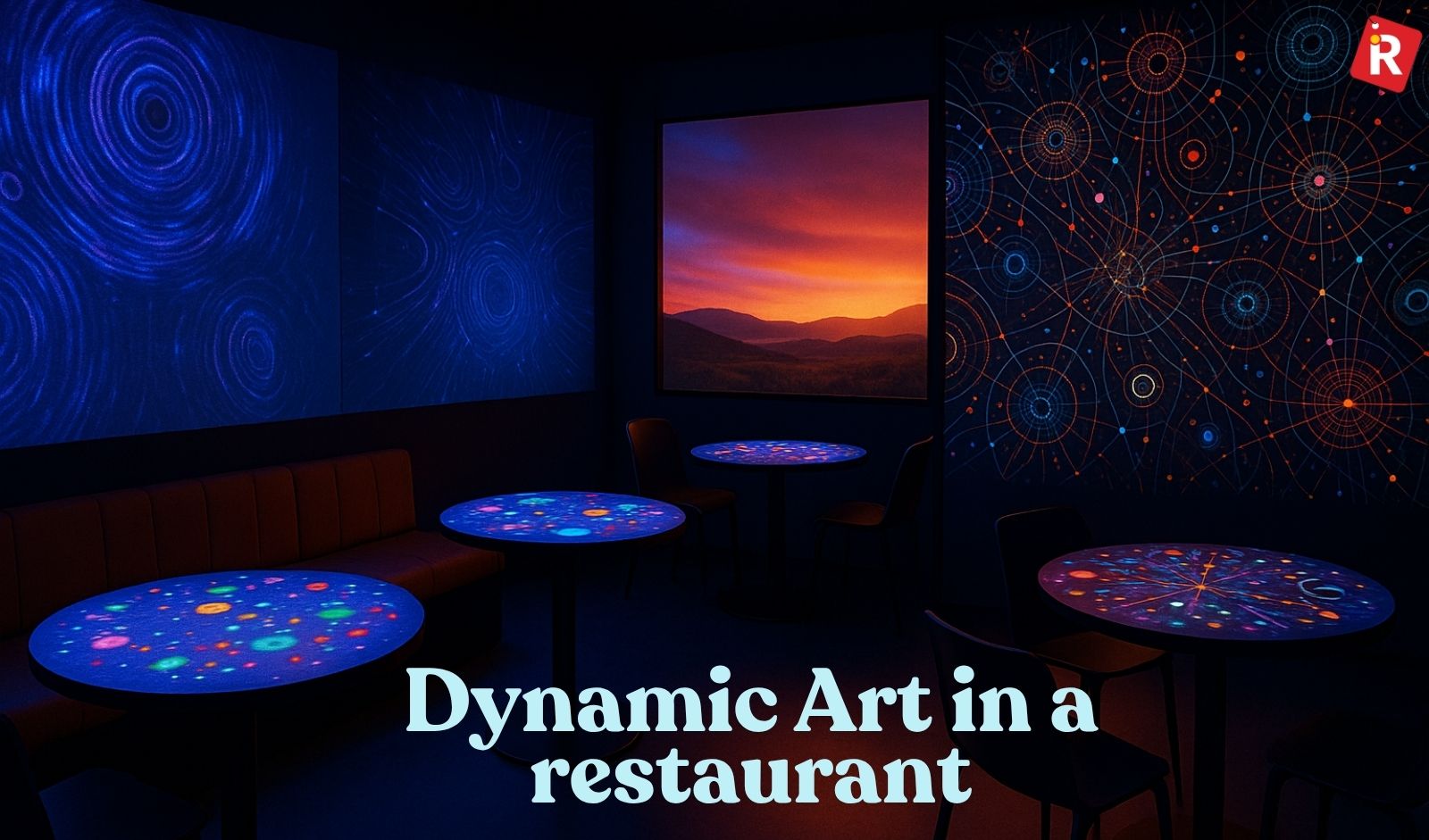
Consider walls with changing patterns, tables with small projected graphics, or digital "windows" that show altering landscapes. This design goes beyond static decor, using kinetic art and interactive computer displays that constantly change the atmosphere. The venue itself becomes a dynamic, breathing organism that continuously shapes the dining experience. Its distinct attraction stems from its multi-sensory, ever-changing nature, which captivates and surprises while providing limitless fresh visual aspects for repeat visits. This concept appeals to tech-savvy and experience-seeking customers, particularly those of the younger age groups. However, it requires a considerable upfront investment in technology, continual maintenance for digital information, and careful consideration of light levels to avoid distracting from the meal.
2. Sensory Overload
Rather than focusing exclusively on images, this design deliberately engages all senses. It features totally different textures such as velvet walls, rough stone, or polished wood; subtle, consistent ambient scents (think a delicate spice blend, fresh rain, or a hint of citrus—never overpowering); and a carefully chosen soundtrack that includes gentle nature sounds or a soothing urban hum. This strategy creates a complete and absorbing experience that is memorable, producing an original and extremely pleasant atmosphere. It provides a unique retreat from the typically hectic urban atmosphere. Meticulous preparation is required to ensure that sensory aspects are harmonic and do not overwhelm, and material choices must be strong for handling diverse textures.
3. Deconstructed & Exposed Aesthetic
This approach acknowledges a building's "bones" by intentionally displaying structural and functional aspects. Consider visible pipelines, pipes, raw concrete, exposed ventilation systems, and deconstructed furniture. It is an honest approach that reveals the underlying structure. Its particular appeal stems from its raw, industrial-chic appearance, which starkly contrasts with highly polished surfaces. This design emphasizes authenticity and produces a sophisticated, urban vibe that complements fast-rising industrial and commercial regions. Practical considerations include keeping exposed elements extremely clean and well-maintained, as well as using high-quality materials for components that will become design features.
What's new: Practical ways to train staff for better customer service
4. Stepping into a Storybook
The entire restaurant is converted into a perfectly detailed scenario from a certain novel, film, magical universe, or historical period. Guests are immersed in a story rather than simply dining. Consider an "Alice in Wonderland"-themed tea parlor, a "secret garden" dining room, or a bar hidden behind an ordinary bookshelf. This generates an unrivaled sensation of escape, wonder, and originality, making the restaurant extremely "Instagrammable" and generating a lot of attention. It provides entertainment much beyond the meals and can be a strong lure for families and younger populations looking for unusual experiences. This difficult concept requires significant investment in custom props, set design, and meticulous attention to theme continuity.
5. Modular & Transformable Space
This design includes extremely modular and changeable furniture, walls, and lighting systems, allowing the entire room to change throughout the day or for different events. Consider sliding partitions to create private dining areas, adjustable tables for intimate or social events, and lighting schemes that range from bright breakfast to cozy evening. Its distinguishing feature is its exceptional flexibility, which allows it to adapt to different times of day (e.g., café in the morning, bar at night) and accommodate a wide range of activities. This makes it suitable for multi-purpose venues or restaurants that want to maximize revenue streams. High-quality, long-lasting, and readily movable systems, as well as staff training, are required for efficient shifts.
6. Workshop Restaurant
This concept includes a visible, functional artisan's workshop right in the dining area. It could be a live bakery where bread is kneaded, a pasta-making station, a coffee roasting area, or a local craftsperson demonstrating pottery or weaving. This adds an attractive "show" element to the eating experience while also building trust via transparency and establishing a strong connection to craftsmanship and authenticity. It effectively emphasizes the authenticity of your ingredients or the talent involved, appealing to selective customers. It is critical to maintain high sanitary standards, provide sufficient ventilation for heat and smells, and keep noise levels under control.
Check out: How to start a restaurant blog and attract customers
7. The Historical Dining Experience:
This involves precisely copying a specific historical period, which extends beyond mere vintage décor. To completely transport guests to a bygone era, original furniture, design pieces, period-appropriate music, and possibly even staff costumes are required. Its distinct appeal stems from providing a really immersive and nostalgic experience that taps into a sense of tradition and curiosity. It operates as a living museum, with visitors actively participating in the atmosphere of another era. This challenging concept requires substantial research and investment in real or high-quality replica components, with consistency across all elements to avoid a "costume party" atmosphere.
8. The Minimalist & Hyper-Focused Sanctuary:
This design is a major departure from overcrowded aesthetics, removing any unnecessary features. The space focuses on negative space, single focal points (a gorgeous piece of art, a meticulously built table), and the purity of form, line, and high-quality materials (raw concrete, polished wood, and plain steel). The design disappears, making the meal the final "design element." This creates a quiet, refined, and uncluttered environment that promotes mindfulness and a greater appreciation for the food industry. It caters to a specific market looking for a quiet and elegant eating experience, but the main stars are excellent cleanliness, organization, and incredibly high-quality food and plating.
9. Interactive Walls & Surfaces:
Interactive design elements can be used to attract the diners. This can include giant chalkboard walls for sketching or writing, as well as erasable surfaces and tables with embedded digital screens for ordering, browsing menus, and playing light games. This invites direct guest participation and creativity and adds a playful, engaging element to the dining experience, resulting in unique photo opportunities and potentially increased dwell time for families or groups. It's ideal for family-friendly restaurants and tech-forward cafes looking to create a vibrant, engaging environment. Durable, easy-to-clean surfaces and solid, user-friendly digital connectivity are important considerations.
Read this: A CULINARY DEBUT: INDIA WELCOMES ITS FIRST MODERN CHINESE POP-UP AT ZEN!
10. Gallery Dining Experience:
The restaurant functions as both a revolving gallery and a permanent display area for a certain type of curated collection. This may include antique culinary equipment, rare plant prints, a revolving exhibition of photography, historic maps, or a diverse collection of foreign antiques. Its distinct appeal stems from combining meals with cultural research and artistic appreciation, providing ongoing mystery and curiosity that promotes repeat trips to discover new works. This approach requires a passion for collecting and curating, with displays that must be secure, well-lit, and consistent with the restaurant's brand to seem logical. It could appeal to art lovers and those looking for a culturally enhanced eating experience.
Conclusion
In the competitive restaurant market, a genuinely successful establishment goes beyond simply providing cuisine; it becomes an engaging experience, a one-of-a-kind destination. Interior design, when approached with creativity and strategic intent, can help define your brand, improve customer satisfaction, and drive long-term growth. By embracing one of these innovative ideas or combining pieces of them, you do more than just launch a restaurant; you create an amazing setting where every meal is transformed into a cherished experience, guaranteeing that your restaurant stands out and thrives as a renowned culinary icon.

In today’s hospitality landscape, ambience and decor are more than just visual enhancements; they are pivotal elements of the overall guest experience. Good decor really makes a difference. It grabs attention, sets the mood, and creates an environment where people want to stay a little longer.
With the power of social media, restaurants and hotels are getting viral on Instagram with reels and photos attracting the young crowds. The term “Instagrammable” is often used lightly, but in reality, it’s about creating memorable environments that spark curiosity and storytelling.
How Ambience defines the Restaurant?
For me, the interiors are like the visual handshake of a restaurant — they tell people who you are before they even taste the food.
Talking about the ambience, Mickee Tuljapurkar, Owner, La Loca Maria and La Panthera said, “At La Panthera, we wanted the space to reflect that blend of timeless yet on-trend European charm. The inspiration came from our travels across Europe, drawing ideas from different countries to create a space that feels both classic and modern. At La Loca Maria, we went for a warm Spanish feel that’s laid-back but still high-end. The murals, textures, and colors all speak to our love for Spanish culture, making our space a reflection of Chef Manuel Olveira’s roots.”

(In pic: La Loca Maria in Mumbai)
Commenting on the same, Samir Shah, Managing Partner, Alexis Hospitality, added, “At Santorini, our rooftop setting with panoramic city views, Mediterranean inspired decor, ambient lighting, and curated soundscapes work together to create a transportive escape for diners. In an era driven by social media and aesthetic storytelling, the visual and emotional appeal of a space can often be the deciding factor for first-time visits and return customers.

(In pic: Santorini)
Challenges Faced by Restaurants
The advantage of a well-designed space lies in its ability to increase dwell time, boost per-cover spends, and generate organic social media buzz through guest photos and check-ins. It also positions the brand as premium and experiential, attributes that resonate strongly with today’s lifestyle driven consumers.
While the benefits are many, creating and maintaining a consistently engaging ambience presents challenges such as weather uncertainties, evolving design trends, and the high cost of maintenance.
“Rooftop venues like ours are also at the mercy of environmental factors like wind and rain. To overcome these, we invest in all-weather furnishings, adaptive lighting, modular decor, and seasonal updates that keep the space fresh without compromising the brand’s core aesthetic,” pointed Shah.
One of the toughest parts is making sure the space looks good but also works well practically. While, adding her views, Mickee said, “We want to fit in enough seats, so people feel like they’re getting a good vibe, but not so crammed that it feels tight. Lighting, sound, and flow are also super important.”
Creativity at Top
Designing a restaurant is about balancing creativity with functionality. It’s easy to get carried away with visual concepts, but the space needs to work seamlessly for staff, customers, and operations.
Talking about the same, Keith Menon, Founder, Spiro Spero who has designed Silly, Blah, Hoppipola, Demy, Que Sera, KAIA, amongst other, pointed, “Some of the biggest challenges involve optimizing limited space, managing acoustics, and ensuring the design aligns with the kitchen workflow. There’s also the emotional aspect—making sure the space resonates with the brand and the community it serves.”
He also mentioned that collaboration is key to building spaces that are both beautiful and practical.
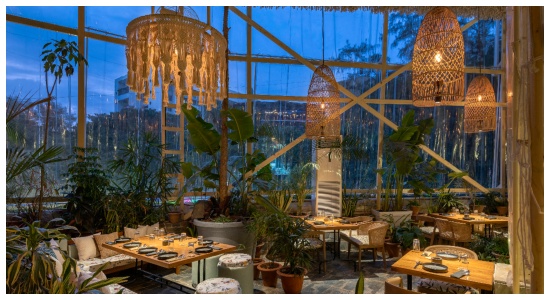
(In Pic: Tuski in Pune designed by Architect Keith Menon)
While Sumessh Menon, Architect & Founder, Sumessh Menon Associates who has recently designed Donmai and Mirage in Mumbai, currently designing Yazu in Colombo and Srilanka feels that Indian restaurant brands are expanding widely in US, UAE and in other places and décor plays a major important role in it.
“We use monochrome colors, ceiling with LED, the way we design floorings has changed, and bar is the major focus everywhere. Every good restaurant has a good outdoor view these days. The main challenge for us is the timelines. The look and feel and execution of a project on a short timeline is one of the biggest challenges,” he explained.

(In Pic: Donmai in Mumbai designed by Sumessh Menon)
And there’s no denying that the right ambience of restaurant can contribute around 40-50% of the business. And the future is shaped by evolving customer expectations, aesthetic, technological integration and sustainability.

Theme-based restaurant is attracting customers for quite a sometime now where the restaurant owners are trying to align the décor, food and interior with the theme. With the rise in social media, the popularity of these restaurants among the customers is high. Also, with the increasing viewers for the online series and dramas, people have this urge to try Korean food in a Korean-theme restaurant or Mexican food in a Mexican-theme restaurant, experiencing those vibes quite literally in the environment.
What’s Pushing this Trend
“Theme-based restaurants have a rich history spanning decades, but their true evolution has taken place over the last 10-15 years as dining experiences have shifted from simply enjoying a meal to seeking immersive, memorable moments,” commented Gaurav Shetty, Director, Peninsula Hospitality that Wakiki, a restaurant that aims to encapsulate the Hawaiian spirit, offering the guests not just a dining experience but a mini vacation through their ambience, décor, and menu.
There’s no denying that the future of theme-based restaurants is bright, with a growing emphasis on authenticity and the creation of deeper connections with guests through thoughtfully curated environments that offer more than just a place to eat, but a place to experience something truly special.
“By creating a thematic dining environment, restaurants like ViVi take guests to the heart of Italy, combining authentic Italian cuisine with a thoughtfully curated ambiance. This thematic approach not only enhances the dining experience but also caters to the modern consumer’s desire for memorable, engaging outings. The success and future of theme-based dining is evident in its growing popularity, as these venues offer more than just food—they provide a fulfilling experience that appeals to the senses and emotions,” commented Niketa P Sharma, Owner & Founder, The Thane Club - Vivi Italian Bar & Kitchen.

Consumer is at the Forefront
The evolution of theme-based restaurants in India reflects changing consumer preferences and a growing appetite for unique dining experiences. As the industry continues to evolve, we can expect even more innovative concepts that cater to diverse tastes and preferences. Since, there is cultural influence, rise of celebrity chefs, urbanization and changing lifestyle, social media influence, culinary shows etc that’s giving a way to the world of theme-based dining.
“Restaurant owners can attract customers by having an immersive atmosphere, interactive dining, Instagram-able spaces, creative food offerings, interesting fusions, special events, seasonal menus,” added Harshadeep Pawar, Head of Operations and F&B at Ilili.
Commenting on the same, Shaurya Malwa, Co-Founder, Nho Saigon, Mumbai’s first Vientnamese restaurant pointed, “Nho Saigon offers a warm and inviting setting perfect for any occasion, celebrating Vietnamese cuisine through regular food festivals and special events. The restaurant’s commitment to quality and customer satisfaction is evident in every aspect, from the thoughtfully curated menu to the warm, inviting environment.”

Hence, it is evident that the restaurant business is constantly changing as we look to the future. Restaurants may survive in a constantly shifting environment by adopting innovation and staying ahead of the curve.

Visually appealing restaurants is all that matters in the thriving digital age. Exquisite restaurants and cafes can be found where equally exquisite aesthetics beg to be included on your Instagram feed. Mumbai eateries satisfy your cravings for mouthwatering food, but their exquisite ambience and décor also serve as visual treats. These Mumbai restaurants offer everything you might want. While enjoying delicious meals with loved ones in Mumbai, be sure to check out these Instagram-worthy locations that are brimming with artistic decor and inventive touches. The beauty and the artistic vibe of the place often differ with the aesthetic and décor as they give us a soothing ambience.
The increasing power of social media has forced restaurants in the city to devise creative strategies for drawing customers. The power of social media is such that people often seem to drawn themselves to reels and videos that goes viral and tend to visit the places for the same. These are some new restaurants in Mumbai that you should bookmark if you choose your dining spots not only on the basis of the food they serve but also on the atmosphere and interior design. Who doesn't appreciate a fantastic backdrop for their Instagram photos or Snapchat, after all?
Koa

Juhu has always welcomed every change with open arms, and we believe Koa is the kind of restaurant that transports you to a happier time, which is a much-needed escape from the daily hustle and bustle of our busy lives. Launched in October 2023, Koa has one of the best Bohemian décor in the city.
Koa boasts a serene ambience and chic Bohemian decor inspired by the stunning aesthetics of Greece. Another highlight is its multi-cuisine menu, which caters to all palates and offers something new with each visit, creating a culinary adventure of its own. Additionally, the drinks at Koa are like a magic elixir in a glass, perfectly complementing the food and making it an all-rounder.
Koa exudes an alfresco vibe, capturing the essence of the Mediterranean with its clean, chic design and elements inspired by the stunning aesthetics of Greece.
“The ambience is meticulously curated, offering a seamless blend of modern sophistication and timeless allure, embracing the eclectic allure of its bohemian setting,” said Prasuk Jain, Founder, Koa adding that they create an inviting space for guests to unwind and indulge in the beauty of genuine connections.
QEY

QEY, the brainchild of Divyesh Thakkar, Kaushik Mehta and Vijay Aagarwal, was born from the need for a space where one can belong and unwind in a city that's always rushing in 2024. With this new venture, the dynamic founders of Amicis Hospitality Pvt Ltd seek to redefine the premium dining experience and create a haven where every visit feels like a personalised journey. The restaurant with its unique offerings of loyalty memberships and exclusive access to the place makes it an enticing offer that you cannot refuse. The interior details crafted by Umesh Desai and Associates boast a stylish yet inviting ambience, a harmonious blend of sophistication and contemporary aesthetics, creating a welcoming space for patrons to unwind. From the choice of lighting to the arrangement of furniture, every detail is meticulously crafted to create a space where attention to detail meets contemporary design.
"At QEY, we transcend the ordinary to create a haven where culinary artistry meets personalised luxury. It's not just a restaurant; it's your corner of indulgence. With our exclusive Loyalty Card and Memberships, we invite you to not just dine but to become a part of an elite community, unlocking a realm of sophistication, extraordinary perks, and a culinary journey that lingers in your memories long after you leave,” shared owner and co-founder Divyesh Thakkar.
Amazonia

Launched in January 2023, the uniqueness of Amazonia lies in its meticulously designed ambience and thematic elements. Our restaurant features a carefully selected palette of colors and decor that you won't find anywhere else in the city. The combination of lush greenery, exotic animals, and intricate design elements creates an immersive rainforest experience that captivates our guests. The vibrant colors and detailed decor transform the space into a lush and immersive paradise, offering an unparalleled visual and sensory experience. This modern interpretation of the Amazonian rainforest, with its blend of natural elements and contemporary design, sets Amazonia apart as a unique and extraordinary dining destination.
Prasuk Jain, Founder, Amazonia, mentioned, “I have always been fascinated by the beauty and mystery of the jungle. My visit to the Amazonian rainforest in Brazil was a transformative experience that left a lasting impression on me. I wanted to bring that same sense of wonder and adventure to the city of Mumbai. The idea for Amazonia was born from a desire to create an immersive dining experience that captures the essence of the rainforest. I love nature, leaves, and greenery, and I aimed to combine the lush, tropical environment of the Amazon with the vibrant energy of Mumbai, offering our guests a unique and unforgettable dining experience that transports them to another world.”
Three key elements to look for in Amazonia are Flamingos, Flora, and Flavours. These capture our vibrant, tropical-themed essence with striking birds, lush greenery, and a globally inspired menu.
Charlee

Charlee was launched in February 2024. The uniqueness of the place is cozy interiors, diverse veg menu and cocktail bar. The restaurant features warm, earthy tones creating a welcoming and comfortable environment. They also offer diverse vegetarian menu and offer a wide variety of dishes to cater to different tastes and dietary preferences. It also options for vegans, and other specific dietary needs. Experiment with global cuisines to keep the menu exciting and appealing. A diverse cocktail menu featuring both classic cocktails and innovative creations, using high-quality ingredients and possibly house-made infusions made the drinks section more classic.
“Our approach to Charlee is like entering a realm of timeless allure. The dark, industrial-inspired interiors, juxtaposed with sleek modern designs, create an ambiance that is both inviting and intriguing,” said Suren Joshi, Co-founder of Charlee adding that the cozy space allows you to have conversations while the vibe of the place plays the main character. Everything about Charlee’s décor element sets the stage for an evening of sophistication and charm.

The rise of the Coronavirus pandemic has directly impacted the restaurant industry and has dynamically shaped the industry to adapt to the current circumstances. Understanding the industry disruption, the place has left no stone unturned to prove themselves resilient. From enhancing new interiors, to bringing new design trends the foodservice industry has certainly pivoted to new offerings to keep afloat in these difficult times.
Here are some enduring design trends in interiors & architecture that we are seeing in restaurants post-pandemic-
Expanding outdoor dining: The pandemic has forced many restaurants to change how they usually operate, dining out took a big hit, many restaurants expanded their outdoor dining space, using parking space or other outdoor space was in trend. In some cases, places having existing outdoor space got it renovated adding new life to open area making it more welcoming and exciting for their guest to sit and chill safely. Keeping safety as an utmost priority these outdoor seating had Plexiglas barriers between booths encouraging guests and customers to maintain social distance.
Digital transformation is on its way: The restaurant industry is developing and leading to new technological advancements in this space, having said that QR scans or codes are one thing we could easily find out post-pandemic. These quick-response scans have broadly replaced printed offering menus in cafes, bars keeping interactions contact-free all you have to scan and order or pay. This digital transformation has truly leveraged the capabilities of restaurateurs to learn how to meet the demands of modern-day customers.
Open kitchen to gain loyalty: The restaurants even changed the layouts also wherein instead of having the kitchen at the back, having an open kitchen and table around the kitchen wherein food will directly be served on the table was more comforting and promising for customers. These open kitchens just not only allowed guests to just come and dine in but they could see how safely their food is prepared.
Curbside pickup and drive-thru designs: Drive-thru gained immense popularity over the last year as the coronavirus pandemic closed indoor dining and made consumers not enter the restaurants & big chains. The restaurant industry is bringing innovations & creatively adding the latest design trends to their space to help enhance the safe & enjoyable dining experience for their customers.
Creative Partitions: With most of our daily lives confined to the home, the importance of having separate spaces in the restaurants is what customers like the most. Dinning is an experience; a simple addition of wall effect will create a brand new experience for the customers. These partitions enhance the diner’s experience creating safe, flexible areas improving the beauty of each portion.
Rooftop dining space: Rooftop dining spaces have always been popular and loved by everyone but after the pandemic, the rooftop place in restaurants got a new breath ie restaurateurs heavily invested in the decor of their rooftop making it an attractive place to dine in. The place is open for business all year round be it winters or summers, the rooftop dining is famous among millennials, youngsters who crave to vibe in both weather and place.
Making it more photo-friendly: In the age of Instagram, restaurants find a way to look unique and different and this is when interior design plays its role. In today’s time youngsters, millenials love to post where they have been all day long. To make sure your restaurant looks instagrammable you need to go with the trend, adding certain designs, bold text can easily help your place grab attention and new customers.
Comfortable seating: Everyone today wants to be comfortable and finds a space which can be called “my space”, due to the office’s closed colleagues and team members love to meet outside to enjoy or have short meetings and spend time working there for longer & longer hours. Looking into these restaurants has placed cushioned seats, chairs into their dining floor layouts.

Dining areas are the most succulent spaces specifically in 5-star properties. The experiential factor that the guests look forward to when visiting or staying in a hotel is manifested through its Dining area. The space influences appetite, experience, conversations and initiate togetherness among the guests and serves as a focal facet for their vacay time.

Haridwar is an ancient city and important Hindu pilgrimage site in India, where the river Ganges exits the Himalayan foothills. It is the city known for the strong influences of the deity Shiva, further enhanced by the presence of the river Ganga.
Pilibhit House, a mesmerizing hospitality project in Haridwar by Designers Group, seeks to enthrall everyone who enters the town searching for liberation (Moksha). The cultural and religious significance of Haridwar played a considerable part in the contemporary design grammar of the Pilibhit House Hotel. This vintage property, situated on the banks of the river Ganga, was owned by the descendants of the royal family of Pilibhit.
The project was first initiated by the late Ar. Pradeep Sachdeva. After his untimely demise in 2020, this project was handed over to Designers Group. Later, Mr. Sachdeva’s team continued to work on the architecture of the property with Designers Group for the successful completion of the project.

As the project was assigned to the Designers Group in June 2020, a time when the lockdown was strictly implemented due to the COVID-19 pandemic, the team faced a crucial challenge. They had to design without making in-person site visits and by taking virtual tours of the assigned project while it was under construction.
The hotel is a kaleidoscope of cultural influences and civilizations, an idea demonstrated by the holy city of Haridwar, where people from all over come to attain Moksha.
The dining area was devised to denote the Kama. The Neel Kanth colour of the Nandi evident in the exuberant wooden hand-painted ceiling with gold accents here reflected the presence of Lord Shiva. The classical influences in the area boast of the Indianness rooted in the hotel. A wall installation assimilated here is inspired by a holy-book reading-stand where the Granths (holy book) from usually every religion are kept, manifesting oneness and secularism of the country. Another light installation hovering over the buffet counter stimulates the sanctity of Shiv Kalash in the space.

The design of this dining space seamlessly puts forth Indian culture in a modern design tone, showcasing the traditional schematic approach and rich temple colour palette. The cultural and spiritual significance of Haridwar plays a considerable part in the contemporary design grammar of the dining area at Pilibhit House by IHCL SeleQtions.

This newly opened BYOB space named Western Village is one of the best places to bring your own booze and indulge in delicious delicacies while enjoying an indoor as well as open sky dining space.

Lush greenery, playful interiors comprising private cabanas and an awesome evening is what they promise. Western Village serves mouth-watering delicacies like Dohra kebab, Peppercorn cheese roll, Dal Makhni, Butter chicken to name a few. It has a welcoming ambience, a unique theme along with a good value for money, hence making it a go-to place to hang out with friends for a good time.

Being a huge party place, it offers some lip-smacking food and mocktails, and foot-tapping music.
“We wanted to come up with a space with a quirky ambience for our patrons alongside a delectable menu which caters our target audience. Creating a range of palatable dishes with a modern-Indian twist with the help of our head chef Kapil Joshi was a no-brainer since it’s very popular cuisine these days,” said Shekhar Sharma, Co-founder, and Owner at The Western Village.

It is situated far away from the hustle-bustle of the city which makes it a popular stop for the youngsters, who don't mind getting away for a long drive.
This place will give you a shack-like dining experience that you probably might have experienced in Goa. It’s situated right adjacent to a well-stocked liquor shop, making it the perfect BYOB place in Gurgaon.

Celebrating the tastes, textures and forms of distinctly authentic vegetarian dishes from across the trifecta of Laos, Cambodia and Vietnam - Plural is Mumbai’s primeval restaurant to take a locavore approach to sustainable vegetarian and vegan-friendly dining in a communal setting.
Nestled in Kala Ghoda quaint by lanes, Plural seeks inspiration from its founder Vedant Shah’s travels from his stint in the USA and across South-East Asia.

Deeply influenced by the culture of the region and its distinct expression through food, the newly launched restaurant and delivery kitchen is flavorful and experimental - reminiscent of the ‘plurality’ of Shah’s culinary experiences that he now envisages bringing back to India.
“It all started with a steaming hot bowl of pho ordered at a neighbourhood Vietnamese restaurant during my university days in the USA. The dish made an enduring impression; I was hard-pressed to find something as fresh and uplifting. My passion for food burgeoned over the years and it inspired me to travel, learn and ultimately take the leap of faith," shared Shah, an industrial engineer by trade who pivoted from the healthcare space to F&B with no background.

One of the restaurant's cultural underpinnings is its environmentally conscious ethos, which draws from the use of eco-friendly packaging and mindful sourcing practices of high-quality, regional produce to reduce carbon footprint. Ingredients are responsibly sourced from local vendors who deliver fresh harvest on the daily, thereby ensuring high standards in flavor.
“For us at Plural, customer experience (the sum) ought to be greater than our individual efforts (the parts). We thus aim to re-introduce storytelling through innovative yet approachable food in communal environs - where our culinary team takes a slew of strikingly fresh ingredients and weaves them into a handsome memory of something ripe and distinct on the plate - hitting all 5 flavors along the way and packing tons of flavor in every serving,” he added.
The menu is divided into Salad & Soups, Small plates, Staples, Large plates and Dessert - each having signature dishes of their own to best suit the palate.

Plural's cocktail program is thoughtfully curated to complement the food and the varying preferences of patrons. Each concoction pushes the envelope, whilst maintaining a familiarity resonant to the Indian palate all the same.
The ambience is vibrant, lively and intimate - much like the feel of a posh yet approachable Vietnamese dining square. As its name suggests, the space is designed to enable diverse guests to engage with each other and their neighbours with a shared love of food. From the textured wallpaper to the pickling and infusion jars on display, many elements from part of the interiors deepen the sensory connection to the cuisine.

Adhering to the norms of health and safety, the restaurant has only been servicing home delivery requests thus far.
However, it has now opened its doors for customers to walk in and also ontinues to deliver food via its website between Cuffe Parade and Juhu, from 12 noon till 10 pm.

Interior design is critical for any restaurant, yet it can be often overlooked. No one wants to get their menu just right only to have guests leave because of there wasn’t a waiting area, or fail to return because the noise level was too high or a negative review because the lightings were too dim or loud. It’s the first impression that the patrons will have of the space. Before they’ve even tasted the food, they’ll make a judgment about the design and comfort level.
Thus, carefully considering design will help reinforce the brand story and will eventually help drive business. So ,how can one be sure that his/her restaurant is optimized for design? Interior designers weigh in on what they find restaurant owners often overlook, important yet minute details.
Ignorance of environmental awareness
Restaurants use almost five times more energy per square foot than any other type of commercial building and roughly 10 percent of the country’s trash is generated exclusively by the restaurant industry, triggering a considerable negative impact on the environment.
According to Jehan-Ara Poonawala, Chief Designer - JJ Poonawala Architects & Interior Designers, some of these negative effects restaurants inflict on the environment can be reduced, and in some cases eliminated, through the use of energy-efficient, high-performance equipment as well as innovative design and construction practices.
“This ignorance of environmental awareness has been compounded by owners that have a short-sighted vision of building timely-cheap restaurants to make a quick profit; yet, disregard the long-term effects of increased operating expenses as a consequence of inefficiencies in design and construction,” Poonawala commented.
She suggested that the design of the dedicated recycling and storage area must be easily accessible within the restaurant in order to encourage these practices.
Exaggeration of the materialism
Restaurant design is the harmonious blend of experientiality and functionality that doesn’t complete the picture when in the wrong ratios. According to Dhruva Kalra of I’m D’sign, an exaggeration of the materialism and the luring trends around it may leave the design far-fetched and quixotic.
“Although most eateries captivate our eyes with an undeniably enticing look, a wholesome experience calls for a broader gratification—costumer centricity, utilitarian schemes, state-of-the-art amenities and more. The ideal design seeds the customer interests without overlooking the interconnection of interior elements in a design,” Kalra stated.
The exceedingly aestheticized finishes
“Aesthetics is often taken to a level that it turns a deaf ear towards the comfort of the inmates,” Kalra states. Some spaces overplay with the beauty factor, leaving uncomfortably aligned seaters, skidding floors and obscuring dim-lit tables open to the visitors. In most spaces, the reflectivity can be overwhelming and the sheer surfaces may be uncalled for. A great deal of practicality, privacy and purpose is given up in such aesthetically-biased concepts. According to Kalra, the solution lies with a more conscious balance, floors can accommodate parallel walkable layers and screens shall be foregrounded in see-through backdrops..
The aesthetics must also represent the type of restaurant it is for. A casual setting for a high-end restaurant wouldn’t have customers looking for a repeat experience. Not all restaurants are made for an open layout. Smaller or eccentrically-laid profiles shall include elements that accentuate the experiential attributes. Everything from the visitor’s entry till the actual gourmet indulgence calls for a special regard. “Welcoming entries, non-claustrophobic layouts, spaced-out tables, tucked away washrooms and a 360-degree harmony in view makes a restaurant worth the watch. Succession of micro-level encounters aggrandize the larger shell,” Kalra further suggested.
Recalling the lighting
Most restaurants go overboard with the dramatic light accents and leave the quintessence unattended. Being central to the design of a restaurant, it becomes inevitable to layer the lighting levels. From wayfinding to unobstructed serving, all activities in a food outlet get accelerated with appropriate lighting elements. “Tech interventions in spanned-out spaces make a trust of feasibility, centralised light control as in commercial false ceilings come out as befitting modules. Suspended luminaire strips in the kitchens, track lighting in the counters and flushed panels along the walkways create a sensible yet stunning space,” Kalra said. By properly setting the mood, lighting influences customer experience and the restaurant sales.
Not to forget the pandemic consequences
In times when both diners and restaurateurs are wary of circulation and seating arrangements, it is crucial to develop nimble layouts to ensure strict two-metre social distancing norms. “If we can reconfigure restaurant space in alignment with social distancing norms while promoting better engagement, something interesting could emerge as them being thriving hubs of human interaction,” Asha Sairam, Principal, Studio Lotus commented.
Typically, any eatery will seek to maximize seating capacities, optimizing every square foot to simultaneously cater to maximum visitors. Restaurants thus will need to look beyond stopgap solutions to become viable again as businesses and that may very well extend beyond simply their design and layout.
Prediction of the bills
Last but not the least, Kalra pointed out that smart energy systems make the new age restaurants stand out from the rest. Choices in air-conditioning systems, lighting modules etc. define the soundness of the design. Greener inclusions like solar or other naturally-sourced energy systems add a sustainable imprint in the space. Such energy experiments have long-term effects on energy consumption, therefore the bills.
“Smarter systems further bring down the maintenance costs in long run. The umbrella of spends in a restaurant thus needs a look away from the present, all the way to the future, to become a supreme work of design. The life of a piece of architecture reflects the credibility of its make,” he said.
Even if one have nailed down flow, aesthetics, acoustics, sustainibility and effeciancy, there are still ways to provide something out of the ordinary that attracts customer attention. Maybe an extra storage area for supplies, plugs for cell phones by tables and counters, enough plugs for events, hooks under counters for purses and backpacks and why not a clear spaces for purses in ladies bathrooms?

Tables spaced six feet apart, masked waiters and even glass barriers, these were some of the changes we came across while dining out during the pandemic. Whilst the global pandemic is coming to an end, there is a persistent concern about the need for social distancing in restaurants across the globe. The future of restaurant design thus looks way different from what it used to be.
Restaurants are exploring significant changes in the layouts, with a focus on limited social interaction between the patrons, the chefs and the attendants.
“With more diners choosing takeout and delivery options, restaurants are revamping their interiors. Fewer tables spread out, fewer bar counters and more open seating,” commented Jehan-Ara Poonawala, Chief Designer, JJ Poonawala Architects & Interior Designers.
This will further allow more space for cooking and preparing orders. Poonawala feels that smaller restaurants are the future and its best to avoid monstrosities with real estate and rent being big factors. “A standard prototyped design in with multiple small locations will earn better than one large space,” she said.
In order to design a pandemic friendly restaurant, a comprehensive study on mapping distances from points of ingress and egress, and from the dining space to the washrooms, will determine the layout’s overall effectiveness. The industry will see the demand for more open kitchens after the pandemic, as they promote transparency.
Typically, any eatery will seek to maximize seating capacities, optimizing every square foot to simultaneously cater to maximum visitors. “When one tries to accommodate all necessary protocols, I reckon the layout would effectively allow for seating roughly thirty per cent of the capacity that it is meant to serve. Restaurants thus will need to look beyond stopgap solutions to become viable again as businesses and that may very well extend beyond simply their design and layout,” Asha Sairam, Principal, Lotus Studio commented.
Re-thinking outdoor dining
The fall of Covid scare has also made restaurants rethink their outdoor spaces with restaurants expanding their dining options and converting grassy areas, footpaths, and streets to outside dining zones. Outdoor dining may in return become the biggest factor in diners returning to in-person restaurants.
According to Dikshu C. Kukreja, Principal Architect at C P Kukreja Architects, spatial planning too should undergo certain reforms such as socially distanced seating in restaurants, regulating movement in common areas such as lobbies, terraces, washrooms, and use of semi-open seating, gazebos and make-shift pavilions to accommodate individuals travelling in groups.
Porous materials like wood, cardboard, fibres, cotton, and leather seem to be a less stable material for the Covid-19 virus, which lasts only 24 hours on these surfaces. Antibacterial fabrics and finishes, including those that already exist, like copper, should be used.
“Even the use of materials will have to be more innovative, circular, and visionary; from its manufacturing, management, design, execution and recycling. We need to reimagine our restaurants to create more inclusive, conscious, and experimental designs, with a stronger focus on adding a tactile, humane touch to our increasingly digital interactions,” Dhruv Kalra, Principle Architect at I'm D'sign Studio added.
Along with the change of materials, heating, ventilation and air conditioning (HVAC) systems, and backend technology will need to adapt to the changing architecture. Technologically sound restaurants are now imperative for a successful operation.
In all the efforts to create a restaurant space more comforting and reliable for the patrons, one major aspect of sustainability should not be skipped. As Kukreja comments, “In our efforts to retain hygiene and clean environment inside, one must be mindful of the waste generated. Designs should be adept at optimized resource usage, minimised (or net-zero) waste generation and climatologically suitable.”

The newly built High Energy Pan Asian Concept Pa PaYa is all set to open its gates in Worldmark, Gurugram which is the most awaited leisure and entertainment space with a holistic getaway for food.
Combining grandeur, elegance and Asian elements with a union of Japanese architecture, the design celebrates beauty of craftsmanship and way of life of the rich Asian culture.

Design concept draws inspiration from the age old art of “kintsugi” which is similar to the Japanese philosophy of wabi-sabi, embracing of the flawed or imperfect.
Pa PaYa, Worldmark, Gurgaon will be one of the finest experiential dining places in NCR. With this newest entrant, Moonshine Food Ventures strengthens their association with Massive Restaurants after the opening of Farzi Café, Aerocity.

“Pa PaYa, Gurgaon is an outcome of our successful and pleasant association with Massive restaurants which started from Farzi Cafe, Aerocity. The association has only become stronger with time and with the second franchise in place, we hope to achieve greater heights together with Pa PaYa” said, Vishal Anand, Founder, Moonshine Food Ventures
Pa PaYa, Gurgaon showcases super innovative presentations, the likes of which have never been seen before, integrated with cutting edge contemporary cooking techniques, including the use of the latest innovations & technology used in molecular gastronomy.
Retaining the flavors of Asian classics, the menu includes Sushi Matrix, Shao Mai Dimsums, Lamb Rendang curry ; Penang Curry ; Mapo Tofu ; Peanut crusted ikanbakar ; Shanghainese style pork belly ; Tuna tataki pizza ; Rock shrimp tempura ; and more for a true pan-Asian dining experience. For those with a sweet tooth, the selection offers unique versions of iconic dessert from the regions that are presented in a fun and engaging manner for an indulgent affair such as Chocolate ball on fire, Liquid hazelnut fondant cake and many more.

The restaurant has vibrant mix of outdoor and indoor seating for the guest. Seating capacity of 72 people, situated on the second floor of Worldmark Gurgaon giving a magnificent view of the gurgaon skyline.

Covid-19 pandemic has hit the industry badly where every one of us are forced to change our lifestyle. Known for the best of innovations and his contribution in food and nightlife Industry, Priyank Sukhija has become one of the first restaurant owner to redesign his restaurant to suit the Covid-19 pandemic. Setting terms with New Normal of the Industry during Pandemic, he is all set to unveil the new look of Dragonfly.

“Going with the current scenario, I thought of introducing the concept, which encourages people to dine out with safety at its priority. We thought of introducing private pods for each party group who wants to dine out,” shared Sukhija.
The Pods are open from the top, have acrylic walls allowing the view of the restaurant as well. “The concept is created to make sure that each of the diners at Dragonfly feels safe,” he added.
“We have done the latest innovation of introducing private pods. Each pod has a capacity to host up to 12 guests, enclosed with see-through acrylic walls on all four sides, which lets the patrons be a part of the high energy vibe while ensuring maximum safety while dining. We have always been a frontrunner when it comes to new innovations in the restaurant space," he added.

The partitions, the walkways between them and just the area needed to allow the swing of the doors of each pod eats up the floor space of the restaurant but it's worth it if it helps reassure people and keep them safe. This includes throughly sanitising each pod after every seating, and while the servers will be in full protective gear, the more cautious parties can ask them to leave the food and drinks on small serving tables placed outside the door so that no one needs enter their protective bubble.
The concept was designed and brought to life by Bent Chair, India's leading premium manufacturing home decor & furniture brand; with an emphasis on making sure that patrons can keep the party going while feeling the safety provided by the enclosed environment and reducing the risk of contamination to the lowest.
With these changes, Dragonfly becomes the first restaurant in India, to change its interiors suiting the current scenario along with safety measures in place which includes continuous check of temperatures, sanitization etc.

Priyank, along with First Fiddle’s corporate head chef, Chef Sagar Bajaj, has also curated a menu that comprises almost 80% of exotic signature delicacies that have been designed especially for Dragonfly Experience.
May Interest: 5 Food Trends that will rule restaurants post covid
The menu offers a blend of Asian fusion and European fusion dishes, modified to suit the tastes of Indians without losing the flavors of the authentic cuisines. Not only this, another surprise awaits you as Dragonfly has also introduced some great Immunity booster dishes and Immunity booster cocktails in the menu.

Boasting of a backdrop of stunning Aravalli hills, Hotel Devi Ratn in all its glory narrates the story of the heritage-rich Jaipur blending in the astronomical story with an extra-terrestrial design vision.
Spanning over an area of 20 acres, this boutique hotel unveils the Pink City in a manner so out of the ordinary, that it comes across in a whole new light.
Also Read: This restaurant in Bengaluru is creating an indulgent play with its design
In the year 2012 this jewel, exemplifying bold, big, and captivating with subtle regional nuances, the master plan for the hotel property was created by Bhagwat and Associates, and the architecture and interiors were done by Urban Studio.

In 2019, The renovation of this architectural marvel was assigned to Designers Group, as Taj Hotels was on the verge of launching a new boutique brand called ‘SeleQtion’ by IHCL. Although the architecture of this hotel was remarkable, the interior grammar did not comply well with the overall envelope, exactly where Designers Group came in.

The all-day dining outlined in this hotel is called “Vyom”. This expansive sphere with rib vault framework sets forth a restaurant which forms to be a sight for sore eyes.
Variety of seating spaces are created here for an experiential experience with a clear view of Aravalli hills which confers onto an amorous & snug setup to savour. The expanse serves an assortment of colourful hues through the composition of vibrant décor, furniture configurations, wallpapers etc. The accessories replicating animals inspired by the wildlife of Bharatpur sanctuary grant the open dining a sense of valour.
May Interest: This Kanpur Restaurant is a visual-treat for customers
Vyom also caters to the guests with a segregated private fragment incorporating community dining table, library units, artefacts and other décor elements with a gleaming ambience. The twinling pendant lights over the buffet island act as a showstopper. The wall of the buffet area inculcates “henna art” laid out on the tiles in an idiosyncratic blue pattern serving as a focal facet.

With design, geometry & surreal experiences, this place is a blessing in disguise for tourists who visit Rajasthan to explore its charm. It is a place once visited that would leave a long-lasting impression on the visitor’s mind. Mirroring the essence of Jaipur amicably, this hotel is designed to enthral each heart.

The trend of eating out has seen a considerable rise, be it a college student, a corporate manager or a young family. Every now and then people are willing to set out for a bite, and indulge in the ambience that is served to them alongside the savour able delicacies. A divergent genre of the population in urban centres has led to multiple typologies of dining options, which primarily are either branded eateries or standalone restaurants.
Having worked with numerous esteemed brands, Ar. Ishvinder Kaur, Founding Principal ivpartners, states that,”Designing for a Punjab Grill is completely different from designing for another brand considering its legacy. Each of them has different prerequisites related to look & feel that needs to be met. Some prefer the utilization of opulent accents while some prefer muted tones.” “Standalones surely have a more flexible approach but if their design ideology is not impactful, it fails to excite its target audience at large,” stipulates Partner and Design Director Vikas Sabharwal.
Designing Architecture and concept
In interior design & architecture, these two genres of diners with respect to their planning, décor and conceptualization; are quite distinctive. The varied ideology that traverses its journey from conceptualization to realization, forms the primary difference between standalone and brand franchise restaurants. The perception that is pitched for the latter needs to be based on continuity & a carrying forward of the central idea. However, subtle changes are possible & much needed to be inculcated keeping the continuing string of thought. Ar. Ishvinder, elaborates, “We have designed numerous restaurants for Punjab Grill and even though all portray a semblance of opulent royalty, there is a nuanced difference in the appearance of the outlet at Kala Ghoda, Mumbai and the one at Khan Market, New Delhi.”
The Punjab Grill at Kala Ghoda, Mumbai caters to create a mélange of experiences through a contemporary portrayal of the vibrant Punjabi flamboyance. Possessing an all-day diner semblance, the interior design scheme carries a whiff of the cuisine served while plating a vivacious composition to dine in. Evident illustrations depicting the intricate legacy of Punjab, including the ‘phulkari’ and ‘jaali’ incorporated motifs, have been intertwined with the strings of efficient functionality and contemporary renderation.
Contrary to the above, the Punjab Grill at Khan Market in the capital is a fine dining created to cater for an intimate culinary experience. Khan Market, a well-heeled shopping & food destination becomes an apt location for an authentic North-Indian cuisine-inspired restaurant with an essence of nuanced décor. With a global design concept revolving around ‘the chef’, the details were evolved to carry flavours of the local cuisine. The design is circumscribed around refurbishing an architectural inheritance of the colonial era, and thus required the introduction of several amendments & on-site evolution of design planning.
Contrasting to the idea of brand-identified restaurants, standalones base their concepts on current trends & themes. They may vary from being centred around the cuisine served or the target audience of the space. Versatility and experimentation of approaches is what is inherently prevalent for this typology of diners and aids to keep its patrons engaged.
Creating a customer base
Franchise restaurants are affiliated with a unifying brand, while standalone restaurants are individual & unique. A branded franchise brings in the advantage of recognition, owing to the popularity it acquires with its meticulous & professional standards set in the industry. Therefore, opening a new outlet with a brand name fetches a premeditated customer base. There is an intrinsic trust value that is linked to the formats in which they present their cuisine and the milieu.
A standalone café or restaurant, on the other hand, has the job cut-out of building its target audience from scratch. It has a vantage point, owing to the fact that it is not streamlined by stereotypical assumptions and can commence its journey, on a clean slate.
Churning of the franchise model
The basic wheel of the economy for a label marked restaurants and standalone joints have an integral difference, in their management & functioning. The former genre has set rules and standards that have to be taken into accord during the entire business structuring. It cannot be based on random concepts and any amendments formulated are routed through a process and in a stipulated time span. However, the situation in the latter is much more malleable since the management is often regulated by a comparatively constricted group.
Thus, it may be concluded that standalone and brand franchises both have their pros and cons which have to be dealt with. However, as Ar. Vikas states, “The success finally of each of the concepts require a uniquely carved out design perimeter and an exemplary execution of intricate details that will impart the composition with a Midas’ touch.”

The updated acumen of global residents have caused a pragmatic change in the urban facades that curate the metropolitan envisaged around us. From residential to commercial complexes, all primary spaces that govern the daily lives of individuals, have witnessed diversifying changes that have resulted in trend setting stalwarts for design. The hospitality sector too has been a part of this paradigm shift, with the evolution of people’s taste towards spaces they desire to spend moments of frolic or respite. The key notion that plays the requisite trick for such arenas is primarily connected to being exclusive in the design concept that is portrayed and has a strong sense of being aesthetically unprecedented and unparalleled to any other diner of the same cadre.
Clarity on the genre of audience: Every genre of diner has a specific category of audience that it desires to charm, with the incorporated design typology and décor. Thus, it is integral to conclude with the concept and aesthetic appeal as per the admissible crowd. For patrons of opulence, schemes instilled with accents of gold and royal shades of maroon, work the drill; whereas with a bar/pub targeting the millennials, the composition has to impart the essence of ecstasy and euphoria through quirky lights, bold graphical representations and innovation illustrated through the details of design. This primary decision making will assist any architect or designer to lay the first stone of a successful strategy with much ease and competence.
A definitive design language: Any poignant interior design schema elucidates its narrative in a distinct language. It does not aim to confuse the user with any supplementary ideas that might astray the accentuation. For instance, in one of our recently completed projects ‘Kampai’, the theme was required to possess a Japanese neo-classical portrayal. Every detail instilled in that design complies with this conceived ideology including; the Noren curtains, kosithshu booths and the traditional furniture utilised. Yet another project titled ‘Prankster’ revolves around the reminiscent memories of college days. Hence, spaces that resembled practical laboratories, libraries with lighting formulated in the form of conglomerated books and hostel with bunk beds for furniture; were chosen to be utilised.
User-interactive: Being residents of the ‘Social media’ age, it is almost needless to say that the designed composition should include certain assets that can do its needful rounds in the newsfeed. It may be in the format of a generic ‘Selfie point’ or an arena that requires interaction of the audience with backstage stories. In the above mentioned project ‘Kampai’, an open sushi counter does the drill. It provides a small sneak peek into the master’s craft while keeping the audience on their toes. ‘Toyroom’, a project of international fame, had pieces of furniture sheathed with miniature mascots of the brand to serve the requisites of the label name and supplement the pictorial buzz on the internet.
Attention to residual spaces: Along with consolidating all innovative efforts on the integral spaces of hospitality design, it is pertinent to design the connecting spaces like corridors & entrance pathways with an equal amount of intricacy. This aids in maintaining the patron’s interest in the concept even while traversing his way across from one sector to another. LED Lights composed as words on the ceiling of the entrance passage and artistic displays of pop-artists as wall graffiti, serves as the mentioned ideology in ‘Toyroom’. An efficient planning with apt highlights harmoniously distributed across the entire layout, draws the image of a consistent design panorama, and thus never fails to impress the imminent user.
With the increasing number of options becoming available each day to the residents, it is imperative to be able to establish an impactful set-up, that remains etched with indelible ink. A well-weaved architectural endeavour, with a concoction of certain glistening factors, is apt brew that works its way through the audience and stands the test of time, with ease.

The most important element of Indian cooking “Maachis” is the ignition to the heritage of diverse Indian cuisines. The love affair of Indian cooking with a mixed bag of flavours, techniques and tales of different regions is housed at Ardee Mall in the bustling metropolis of Gurgaon.
From the makers of one of the leading & prominent Indian cuisine restaurant “Not Just Paranthas”, Varun Agarwal & Supra Agarwal brings MAACHIS – “Houseful of India”, a one-of-its-kind Indian Tapas & Cocktail Bar.

A creator of local regional dishes – MAACHIS renders age old traditions to create an experience that toasts to old times and celebrates the new.
“Extremely diverse & unique, India is a display of an array of flavours that dish out magic in a variety of cooking styles. However, food has one common start and that is Maachis,” shared Agarwal, adding that right from the makeover to the menu everything is very Indian here.

The modish construct of the restaurant, corresponds harmoniously with the tones of the space, the earthy contours and the minimalistic expression of the décor – class all the way! Right from the lights to the cane furniture, every detail in fundamentally Indian.
Created with a thoughtful attention & a fresh atmosphere – MAACHIS strips to essential in a way, still keeping a warm & welcoming emanation. An Indian Tapas & Cocktail Bar, comes with a coffee bar of its own. Adding uniqueness, modernity and panache of its own, Maachis is the new stylish to be place of the city.

With a fine and phenomenal approach, the Food at MAACHIS is a colourful curation of the Michelin recommended - Chef Gautam Chaudhary. Presenting the classics yet the unexplored charm of India’s diverse regions, the food here marries them artfully with familiar flavours.
From stylish Soups of Plum Tomato & Sweet Pepper to a traditional Chettinaadu Chaaru an aromatic elixir, Gosht Yakhni Shorba, walk into flavours of Regional Indian Salads from the tempered Beets & Coconut Salad to the burmese 1960 Atho Salad. The Regional Tapas tosses signatures from a Himalayan Spiced Mushrooms, Bengali Beetroot Chaap & Bhopali Bhutte ki Kees to Naga Ghost pepper wings, Shillong Shapale, Kashmiri Naan Kebab & Gondhraj Lebu Seekh Kebab scented with lemon leaves from Bengal. Bursting with flavours of the sea, relish Fish Polichattu, Goan Rava Fish & Kohlapuri Crisp fried Calamari to name a few.

From Regional plates like the Malabari Connection to the Rajasthani Khoba Roti, Red Hot Kerala Fish Curry, Birbal Ki Khichi, Zafrani Tarkari Biryani and Parsi Dhanksar. Devour the Full course meals from Kumaon Style Greens, Tawa Keema Ghotala, Bengali kosha Mangsho, Moilee Curry and more.

With surprising elements, Desserts are a collection of Malpua Waffle, Bengali Rasgulle ki Chaat, Cheeky Chikki Baked Yogurt, Chai Biscuit served Maachis style to Drinks from around like the Kokum Chaach, Coconut Lassi, Orange & Gondraj, Imli Bunta & more experience the best of India at all under the comfort of newly opened Maachis.

Themes as concepts are much established as a key facet in the F&B industry. The mood is then often set around the concept, making eating-out an experience worth savouring.
The theme of a restaurant can be inspired by anything to everything like memories, heritage, the latest trends or more. A design, therefore, should cater to a consumer, serving not only the aesthetic but also to the social and psychological attributes. Hence, the décor and interior design aspect becomes predominant to create the perfect setting for complete customer experience.
The objective is to most often grant an unusual experience of an offbeat time or place to its customers by appealing to their senses and imagination. Creating reality out of fantasies, a creative theme brings uniqueness to the sphere, enabling the owners to use a distinguished identity to establish their brand. Branding has a profound impact on the restaurant, as it boasts of the restaurant's story, attracting the target market and making it stand out from its competitors.
The interior design, however, is a diverse yet complex system consisting of various aspects including furniture, lighting, colour scheme, spacing, and other design elements. Each one of these aspects has a major effect on how a restaurant brand will be conceived.
The furniture inside the dining or social spaces saliently determines its overall style. The right furniture palette can establish an exceptional dining experience which when clubbed with the appropriate aesthetics and music, enhances the gratification of the patronage. Since, colour perception is capable of evoking emotions, it too plays an important role in reflecting the theme of the restaurant.
Further, lighting aids to set the mood for a restaurant, as the level, colour and types of illumination makes the first impression on a diner’s mind. It contributes significantly in defining the atmosphere to be fashioned and now often makes for perfect Instagram-able moments! Mood lighting usually depicts calm and luxury, while natural lighting creates a brighter and more casual vibe.
We, at ivpartners, engage in a broad selection of projects, ranging from large-scale retail entertainment to luxury private houses. With an industry experience of more than twenty years in building ideas, taking up challenges & steering direction through the course, have led the practice to deliver recognized hospitality projects across the country. One of our prominent projects, located at BKC, the coveted corporate hub of Mumbai, Punjab Grill - a Gourmet Fine Dining holds a vantage corner in the landmark Capital building. Present amidst other dotting diners within the precinct, the design of this restaurant stands apart with its exclusive ambience that renders the design with flavours of Punjab.
The concept pertains to a contemporary classic recreation of authentic flavours from the ‘land of five rivers’. Redefining the spicy Punjab cuisine and crafting a new paradigm in the delicate dining experience, becomes the underlying perspective for the design composition. Inspiration has been drawn from traditional craftwork of Punjab, the “phulkari” & “jaali”, which are interpreted in flooring patterns and panelled walls, mounted with tile motifs forming an intrinsic milieu of the central dining spaces. The Punjab Grill at BKC is a sheer corollary of dynamic space design and well-poised intricate elements that present the patrons of food with a regal dining experience enumerated. All of these constitute the component of a well innumerate theme for the restaurant.
We believe that it is a designer’s responsibility to outline a concept to create a wholesome ambience always keeping in view the needs of target customers. The patron’s choice is affected by not just what’s on the menu but also by the mood and character infused into the restaurant by a befitting theme.

Food is maybe the only universal thing that really has the power to bring everyone together. No matter what culture, everywhere around the world, people get together to eat – Award winning restaurateur, Guy Fieri said.
Cultural-themed restaurants have become a very important part of the restaurant business, today. In the internet revolution that we live amidst, we experience an environment that actively shares ideas and concepts. After the internet, one of the biggest influencers of depicting different cultures is restaurants, through their commitment to providing authentic, cultural food. As a result, the act of consuming food has transformed from being a simple necessity to an entire experience of its own. Restaurants today aren’t just designed to serve tasty food, but also to provide a holistic and novel experience. The creation of this experience starts from the very design of the restaurant, which aids customers in beginning their cultural journey, through their eyes. Here are the different aspects of restaurant design that needs to be considered, to create a well-rounded cultural experience:
Colour Scheme
Almost every culture has a definite colour scheme associated with them. For example, the Middle East is often depicted in rich hues of maroon, purple, and gold, while European cultures like Greek, are depicted through whites and blues. Thus, it is important to pick the right colour schemes for your restaurant design that defines your theme. From your walls to your furniture, it is important to maintain the same colour scheme throughout the restaurant, so as to not confuse the customers with too many ideas. Additionally, colours also have a part to play in psychology, with every colour evoking different emotions. Therefore, colours like red or yellow, which are busy and energetic, would be bad choices for a fine dining restaurant, but a great idea for a fast food service. Thus, make sure that your theme, form of restaurant, and colour scheme, are in alignment.
Seating and other vital furniture
Talking about colour schemes, another aspect of design that plays an important role in the experience a restaurant provides, is the materials utilised throughout the restaurant. It is always a great idea to source materials native to a particular region, to have a true representation of the local culture. Furniture with intricate carvings from local artists, is a small, but highly effective way to incorporate authenticity into the design. Additionally, there is a notable difference in the way people consume food in different cultures. For example, Arabic cultures often prefer sitting on low-seating, with plush mattresses and couches, while Parisian cafes usually have outdoor seating, featuring handcrafted wooden chairs. Some communities also believe in having meals as a community, and enjoy meals on long, shared tables. Thus, it is important to identify different eating traditions in your culture, and design the seating plan accordingly, with the appropriate furniture.
Kitchen Design
While the visual appeal of the front-end of a restaurant is very important to ensure customer satisfaction, what is also important is to have functionality and efficiency on the back-end of the restaurant, i.e., the kitchen. Different cultures use different forms of cutlery, utensils, and cooking processes, for cooking and serving the best food. Thus, it is important to understand the functionality of the kitchen space, in this aspect, to be able to cook quickly and efficiently, while maintaining the authenticity of the food. For example, large woks are an integral part of Chinese restaurants, while multiple efficient grills are extremely important in the European cultures. Certain specialty dishes like Tandooris in the Mughal culture, or Momos in the Asian cultures, can only be made through specific equipment, for the best results. Thus, the kitchen should be equipped with the best of tools and equipment, to cater to the different cooking processes used in a particular culture.
Serving Utensils
Lastly, the most effective way to infuse aspects of a particular culture into your restaurant, is through the right kind of serving utensils. Materials of such utensils play a significant role in showcasing different cultures. For example, South Indian restaurants often serve food in banana leafs, or plates designed like them. Japanese restaurants always feature a pair of chopsticks, for the customers to truly experience the Japanese style of eating. With the eating styles differing from culture to culture, a subtle but excellent way to integrate it in a restaurant is through the actual cutlery and serving dishes used to consume and serve the food.
To conclude, it is integral for restaurateurs and interior designers to work together, in cohesion, to create a holistic experience for its customers. The slightest of mismatch can be distracting to customers, and take away from the authenticity of the culture, that you want to represent. What is most important, however, is to truly understand the smallest details of a culture, and find ways to incorporate that, not only into the design, but the very philosophy behind it.
Like renowned American Designer Charles Eames said, “The details are not the details, they make the design”.

A great restaurant experience gets shaped by numerous aspects starting with something as simple as a warm greeting or a smile while being welcomed and ushered to your table. The concept of the restaurant introduced articulately and with élan to the guest paves the way for a personalised experience. The taste of food and home-like hospitality with a human touchensure a memorable meal. Therefore, it becomes important for restaurant designers to be in sync with the guest’s expectations and tap the creative potential of the restaurant to its fullest. With this context, here are some of the latest trends in the restaurant design industry:
Curated experiences – Restaurant design is not just restricted to interior design anymore. From creating the concept narrative to branding, designing logos, menus, uniforms etc., each touchpoint for the guests needs to be curated and imbued with a consistent theme for a holistic gastronomic experience. A case in point is the recently opened Port Muziris in Kochi, Kerala (the first Tribute Portfolio hotel by Marriott in India)– we have created a unique dining experience with eclectic influences where we not only designed the interior spaces, but also the logos, menus & uniforms with our team.
Informal luxury–Fine dining is now being redefined as quality dining. People want informality and to have fun when eating out, but still enjoy good quality food in an atmosphere that enables them to feel relaxed and encourages them to indulge. We see a lot of more interactive& unexpected elements like repurposed objects/ pop-art etc creating a more casual environment that fosters the ongoing trend of instagramable spaces for visual consumption.
Flexibility-It seems that most restaurants are becoming cuisine agnostic which means that they offer selected but varied choices from different cuisines to their well-travelled guests. From a design perspective, this allows for a more adventurous approach where eclectic and diverse inspirations can form a unique identity for the restaurant. However, one must be careful to make sure that it doesn’t result in a pastiche.
Social platform – Dining out is a social activity- People want to eat together in groups, with family or friends. A good restaurant design will encourage this. However, its also good to note that sometimes, people may want to eat by themselves or have a more intimate meal as a couple. It is important to understand this social behaviour and design for both single and communal seating experiences. For e.g.: At the recently opened Ummrao in the Courtyard Marriott, Andheri; we proposed generously sized tables for communal eating but also incorporated a high bar seating and corner tables to offer intimate dining spaces.
Explore Nature- Accessorizing with indoor plants and fresh herbs creates apeaceful and relaxing atmosphere. These emphasise freshness of ingredients on the menu and remind the guests to be more environmentally sensitive to their surroundings. Adding decorative accessories and botanical motifs from artworks to table linenprovides a sense of a natural retreat amidst the urban chaos. In addition, a lot of restaurants are now moving towards naturally lit spaces which instil a sense of well being and provide relaxation to the guests.
Local Stories: From the ingredients in the kitchen to the artwork on the wall, there are many opportunities during the restaurant design process to celebrate the local context. Using locally sourced materials and supporting craft practices is not only environmentally responsive but also goes a long way in establishing the authenticity of the restaurant in the eyes of the guests and the community at large.

Indian cities are now multi-cultural hubs catering to a clientele so well diverse and discerning, that they need to keep up with the growing desires and dreams of its people. The Food and Beverage industry is one such space which is exploding, not only to explore new culinary experiments but also ambience and experience. A restaurateur today has realized this and is more than willing to supply experience and try new settings and concepts depending on their budgets, clientele, and cuisines.
Gen X, today, is living in virtual reality - sharing their experiences and life with everyone. With the facilitation of technology, social media occupies a considerable portion of our daily routines. Social media plays a great tool to help bring out such restaurants, cafes, etc. in the limelight. Through time, preference increasing towards quality over quantity has led the setup of numerous eating-out places which serve exquisite food and offer a soothing ambience to enhance your gustatory and olfactory experiences. Often these posts reflect beautifully designed spaces where people live out of, work out of and dine out of.

Therefore, restaurants are one such place where photography has become important for the customers and for the reach for the restaurateurs. Creating these vibrant, experiential and aesthetic spaces have helped develop a two-way stream for both.
Restaurateurs are exposed to the new emerging design trends all over. They understand the concept of providing a fresh and exciting vibe. And, customers today not only look for a piquant dish on the plate but, also wish to take with them an experience. ''Experience'' being the keyword. There is nothing like sipping a hot cup of coffee or tea in a warm cosy space, beautifully developed rendering a homely vibe. The cherry on the top could be a great view through the window or a relaxing couch spot on the rooftop.
Aspects which impact the designing of restaurants for the contemporary times involve a holistic approach pointing out that along with food there is more to restaurants which adds to the 'unique selling propositions' or USPs.
Not long ago, one would have had a hard time finding and affording a restaurant of their own choice and taste. But, looking at the current growth, a number of spaces are being conceptualised based on all kinds of imaginable themes. This growth reflects the importance of bespoke outlets designed to cater to the crowd.
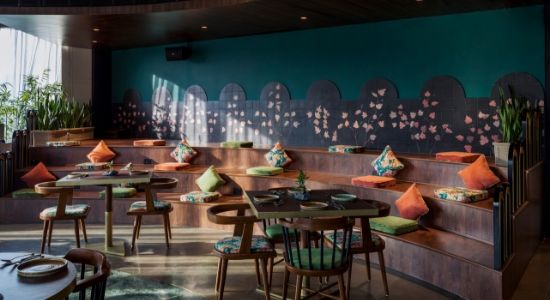
Lighting design and its strategy abundantly affect our perception of interior space. Natural light is being considered a foremost factor in cafes and brunch spaces. This has opened up a new avenue for chophouses putting forth the options for breakfast and lunch too, making them a go-to place. Dining and drinks for evenings, artificial lighting is added to create a bespoke ambience for a get-together or family dining.
Designs and concepts inspired by nature, providing an organic blend, with earthy tones of green, beige and blue bring the outdoor to indoor. Incorporation of reusable and raw materials are among a few popular themes gaining momentum in promoting spaces which are designed keeping sustainability as a highlight. This enhances the experience to be much more home-like and friendly, also prolonging the stay of your visit to the eatery.
Every colour has its own language; yellow signifies joy, happiness, and friendship, blue signifies peace, harmony and calmness, pink emanates romance, red says passion and beige symbolise pleasantness and simplicity. Each colour is thought through when being incorporated in the design whether it's for the walls, the furniture, the bar, or any other aspect of the interior to ensure it imbibes the story of the restaurant. Big clunky furniture has been done away with to make way for much more minimal designs to adorn the interiors.
Not to diminish the impact of furniture layout and the spatial arrangement, different setups are designed to serve a variety of clientele. This largely increases the engagement of people with the space reacting to interesting design themes of the mere seating layout of the space.
The extra-mile that we are expanding towards is to make these spaces more homely and comfortable, add workspace corners at new-gen healthy cafes or coffee shops, make them pet-friendly and provide an area where the new-age pop-up shows or networking sessions can be conducted. The idea is to provide a space where people of all ages can visit and not feel out of place.

As designers, we pull up our socks every time while approaching a new design project. It demands brand new energy, understanding the brief, the purpose, the cuisine and essentially reflect the restaurateur's vision of the brand. From there we orient a design philosophy to craft unique spaces.
Authored by Saniya Kantawala, Founder - Saniya Kantawala Design

With Aerocity becoming the most loved hub among the young and aspirant crowd, we have seen many new luxury restaurant concepts entering the area. And, La Roca by Dinesh Arora is one such new venture that is designed by the top designer Sumessh Menon that stands as an ode to modern Spanish design in its entire splendor.
Right from vault ceilings to vibrant artwork on walls, the entire restaurant has a high energy, all day vibe permeating through it. The striking flagstone flooring sweeping across the entire expanse is entirely custom-made using a local stone and the one-of-its-kind horseshoe shaped bar with an intricate elliptical motif design becomes the piece de resistance of the space. Even the bar display at the back follows the arched shape of the ceiling set against a background of bronze mirror finished cladding.
“Effortlessly combining design with technology, the muted finish of La Roca’s ceiling acts as a canvas for video mapping of modern progressive content on the ceiling vaults. A first in the industry, this stunning display transforms the ceiling with visuals varying as per the mood and vibe of the space for the day,” shares Menon whose design philosophy is simply to aim for *wow* and everything else falls into place.
The elegant vaulted ceiling design reminiscent of the cathedrals of Spain was sculpted out of an otherwise rigidly square space and was the result of Sumessh’s many travels to the south of Spain.
A raised pod seating area is defined by an intricate railing with a stunning backdrop of flamenco dancer artwork splashed across the walls adding that perfect touch of Spanish exuberance to the space.
The walls display striated pinewood finish on one side and on another wall one can see a play of textures and materials including veneer, bronze mirror, exotic stones and metal frames.The colour palette was kept an earthy one with beiges, browns and greys mixed with splashes of burgundy.
He has also received accolades as one of India’s Top 10 Hospitality Designers, listed in India’s Hot 100 list of Designers of 2018, felicitated as one of the "Top 50 Designers" by iGen Awards and most recently awarded the Best Restaurant Designer of the Year 2018 by BBC Good Food India.

Anirudh Singhal, founder of Speedx Bars talks about why it is important for restaurateurs to hire a bar designer.
Nowadays, there is more to a dining experience than just a meal. With the rise of cocktail culture in the food and beverage industry, an extremely important factor for restaurateurs to increase sales and profits, for their restrobar, includes an impeccable bar design.
As per various studies, it is stated that a well-designed bar layout not only increases profits and efficiency at a bar but also boosts the bartender’s morale, thereby, providing quality outputs making it extremely important for restaurateurs to hire a good bar designer.
Previously, bars were designed by the kitchen team, leading to various problems - bartenders would move to and fro from the kitchen to stir up cocktails, would spend a lot of time fetching ingredients and cleaning the counters, increasing service time and lowering the conversation duration with customers. This often led to a lack of knowledge of the intricate details, diminishing the overall experience for the patrons.
With more focus on the beverage industry, restaurateurs must realize the importance of a good bar, hiring a designer who implements new innovative bar designs, thereby, evolving the equipment matrix.
Must Read: Enhancing The Customer Experience With Quality Bar Designs
There are various factors a bar designer could help the restaurateur decide, such as
- whether the restaurateur wants bartenders to use multiple workstations
- how many bartenders will be working concurrently
- which spirits the bar would include
- how much space the restaurant has and so on.
These points will extensively help the restaurateur to make well-informed decisions about the bar layout he/she wants to incorporate.
A good bar design redefines the way bartenders work - increasing the speed at which drinks are made leading to increased efficiency and output. This, in turn, would offer unmatchable quality and sales bringing the best out of cocktail curators providing great innovations to the beverage sector.
Bar designers make sure bartenders get to showcase their craft efficiently, permitting them to work effortlessly and promptly as everything they need would be provided at an arm’s distance.
With an increasing demand for innovative cocktails in restaurants, the number of ingredients stored behind the bar keeps growing, making it important to keep space as a priority while designing a bar to incorporate both storage and room to move for the bartender. A well-built custom bar can maximize the beverage output, double the efficiency and speed of the bartender leading the mixologists to take more complex drink orders giving customers an enhanced cocktail experience.
There are several features that make a good bar, for instance providing a good quality drip tray would enable the bartender to keep their worktops clean and assist in creating great visuals whilst the cocktails are being made. This would encourage the bartenders to prepare their drinks on these drip trays, so a guest can view and appreciate their skills and at the same time create a visual product offering to other guests in the bar.
Also Read: Bar Equipment Design Trends For 2019: Slushies, Tipples On Tap
Speed rails are a key element in the bar as well. Designing speed rails should be done in an innovative and efficient manner. Adding curved corners helps in avoiding an accident in a high traffic bar and the padded rails are useful for less sound while placing a bottle back.
One may notice, in many bars across different cities, the bartender is quite far from the counter top to where the customer is. This happens because of deep equipment and counters between them. Therefore, it is very important for the bartender to make sure that the equipment is kept to the bare minimum depth and offer standing curves in the equipment, where the bartender can really get close to the guests, whether it be to interact with customers casually or to get the orders right. Building rails in a curved design allow the bartender to get closer to the customer while interacting.
Hiring a good bar designer is highly profitable for a restaurateur as a good bar would benefit not only the owner but the clients as well, creating a bar that will pay for itself!

For making any fine dining restaurant successful, heaps of elements starting from management to decor, staff to cuisine play a vital role, however the foremost important aspect of aiding to make it salient is its design. An architectural plan that abides by the bye laws, knows the anthropometry of the space, that is, proper circulation and movement with optimum utilization of the arena affects the overall business of the client. Consumers of the space are influenced by the theme, décor and design with interactive spaces elevating mood, striking chords of nostalgia, aided by communication. Hence, innovation and ideation in the décor makes it more appealing to the patrons.
We, at ivpartners, perceive the clients desire so as to understand their requirements and vision. Different perspectives of each function head towards their space add up to create a perfect design. Elaborating on some design needs and hacks for a fine dining as a designer.
Location – If we look at the designing of Punjab Grill, BKC Mumbai , it is located in the vantage corner in the landmark Capital Building, which makes it accessible for patrons from both within the building & from the BKC community at large. Other outlet of Punjab Grill, which is located at Khan Market, New Delhi, is also a great choice. Khan Market, being a well-heeled shopping & food destination becomes an apt location for an authentic North-Indian cuisine-inspired restaurant with an essence of nuanced décor.
Concept and Brand legacy - Another factor that curates or gathers more target audience is the relation of the theme with its brand name. The theme of the restaurant instills the space with a unique identity. Like Punjab grill has a concept that pertains to a contemporary classic recreation of authentic flavours from the ‘land of five rivers’. Inspiration has been drawn from traditional craftwork of Punjab, the “phulkari”&“jaali”, which are interpreted in flooring patterns and panelled walls, mounted with tile motifs forming an intrinsic milieu of the central dining spaces. Vignettes of erstwhile royal Punjab have been integrated into the interiors, capturing the rich inheritance, also adding traditional value.
Comfort and Safety - We suggest installation ofwell-designed HVAC systems for proper ventilation with acoustical considerations in dining and kitchen areas too, making the place more comfortable for its respective users. These parameters greatly improve the quality of a restaurant. Safety is also a crucial aspect at any public space. Safety not only includes CCTV surveillance but also clear passage between the furniture layout with clear identifiable pathways for emergency exits.
Layout plays a significant role for both the patrons and the staff. While planning, proper functionality and barrier free movement should be adhered to. Efficiency is paramount in the planning of the restaurant, incorporating defined circulation spaces and multiple yet effective seating options.
Lighting of a fine dine restaurant must be ambient yet elegant. Lighting of the restaurant must be in suitable to the theme while accentuating the experience. Ambient lighting in energy saving LEDs can be used instead of direct lighting for energy efficiency. Skylights& fenestrations can be considered to light up during the day with minimal use of artificial lighting.
Thus, creating an accomplished fine dining restaurant can be likened with concocting a dish, with the correct ingredients including ambient schemes and relatable décor; in just the right amounts.

As Indians depend more on meals away from home, dining at restaurants has become a lifestyle to relax and unwind. If you have ever travelled to Europe, you might have noticed that dinner meals are taken at a much later time than the United States’ and these meals have a celebratory air about them - people are heavily involved in a conversation and the dinner is viewed as an event.
Indians have begun to view dining as a one-stop form of nourishment and entertainment. With so much interest and money invested in food, it is extremely important for restaurateurs to develop trends that positively impact customers - including an interior design that appeals to potential customers.
So how do restaurants program profitability and success into their interior design? Based on current trends in the industry and working with restaurants to design appealing, and profitable, restaurant operations, we believe the following elements are critical for successful restaurant design:
Know Your Market
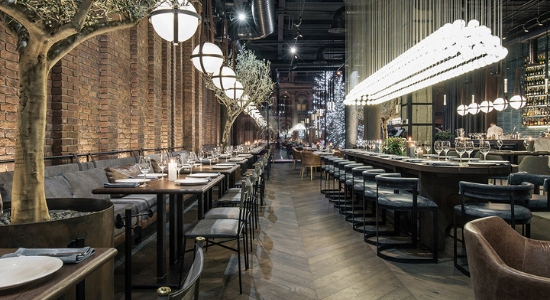
Photo Credit: Behance.Net
Running a restaurant in today’s world is not an easy task. At the end of the day, it is a business activity. To run any business, one needs to have a fair idea of his target audience and the market they are stepping in.
If you are designing a new restaurant, talk to your competition. You would be surprised how talkative your competition is, especially if they are successful.
Must Read: Enhancing The Customer Experience With Quality Bar Designs
Getting feedback from your existing customers is extremely important. Chances are these people dine out at other restaurants and can tell you what they like and don’t like about the design there.
Talk to Your Competitors
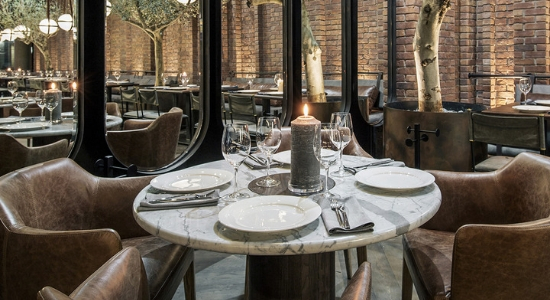
Photo Credit: Behance.Net
As a restaurateur, you need to determine what your customers want. This may sound like a daunting task but all it really takes is a little research. Who do you talk to? Talk to your customers if you are an existing restaurant. Business is like communication; it is a two-way process.
Your possible competitors will tell you what went right with their designs. You will also get the added advantage of seeing their design in action.
Do a Market Research
Look at the demographics of your location, analyze your competition and determine if there is a niche for your idea. The information you receive from this research will be priceless. Also, you will be giving your customers what they want.
Know The Trends

Photo Credit: Behance.Net
You may think all interior designers are alike; it’s not true. A restaurant interior design is different from a residential or a healthcare designer.
An interior designer you hire should have experience in designing restaurants. They usually have a portfolio of their work to show you. It is an excellent way to look at the designer’s creativity and design ability. Pictures are worth many words, right? An interior designer should analyse the operations of a restaurant - the flow of the food from the kitchen to the customer’s table, the flow and circulation of restaurant design from a customer’s and employee’s viewpoint and knowledge of finish specifications for restaurant furnishings, including durability and feel of furnishings.
This is related to the aforementioned element but goes a step further. In our information-based society, people can find out more information at a faster rate - and things keep getting faster and faster.
Also Read: Bar Equipment Design Trends For 2019: Slushies, Tipples On Tap
Trends are like seasons, they come and go. But, fashion and trends they repeat themselves. What might be in trend now, might not be the trend of the season in the next six months. Therefore, you might need the help of an experienced Interior designer who has specialised in restaurant interiors.
Entertainment-themed restaurants
Planet Hollywood and Hard Rock Cafe are excellent examples of this trend. Also, we are currently designing a prototype restaurant for Philadelphia Park, a thoroughbred racetrack and The Turf Clubs, off-track wagering facilities. We are creating a sports entertainment venue that serves food and beverages. Activities in this venue will not be limited to horse racing - the venue will have the capability to simulcast all forms of entertainment including concerts and sporting events.
An exhibition cooking area where your chef is visible
It keeps the excitement up. Such areas the open-kitchen concept also works to improve the customer experience. Researchers believe that people who observed the chef thought the service was better despite the line because they could see the effort being made.
Neighbourhood feel
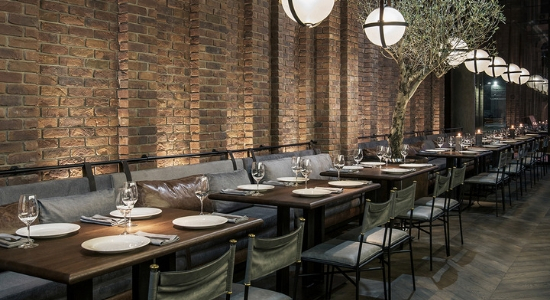
Photo Credit: Behance.Net
People do business with people they know and like. It is the same with restaurants. Restaurants are creating interior designs that make people feel like they belong. It helps to remember the customer’s name, too - this concept can be seen in TV sitcoms like Cheers, F.R.I.E.N.D.S, How I Met Your Mother, etc - a group of people from different paths of life meet at a bar in the hustle bustle of the city. They share their experiences while working and drinking at the bar.
Rustic, Classy and Vintage these are the latest trends in Restaurant Interiors.
Don’t Forget Profitability
Remember you have a budget you need to stick to. Also, keep the employees in mind when you design the restaurant. Create a design that facilitates their movements in and out of the kitchen. This will create seamless service that will make customers happy. It will also contribute to high employee morale.
Internally, market your design to your employees. They may have some ideas to share with you based on their practical experience. Most importantly, emphasize to your interior designer the need to adhere to your budget and that your restaurant should run smoothly and look good. Tell your designer to create an interior that is programmed for profitability - this is where the designer’s value is really reflected based on their experience.
Your restaurant’s design - as well as great food and great service - have to appeal to restaurant patrons so they keep coming back. Incorporate these elements of success into your design and see!
Gunjan Gupta aka GG Shah is a New Delhi-based Interior Designer and the co-founder of 7WD Group (7 Wonders Designing Institution Pvt. Ltd.).

Design has played an important role in building a restaurant brand. It is very important for a restaurant to have a certain guideline and framework in mind before giving a shape to the restaurant. Your design directly impact your customer. Hence, you should use brilliant, catchy, eye pleasing colour to feed your customer right from their eyes. Someone has truly said that a customer eats with its eye first and then its hand. Thus, design has to suit your theme, concept.
“We believe that a restaurant should look simple yet elegant so that our patrons should get a feel of having an authentic experience. For Bayroute, we have created a space through our designs and brought out the essence and vibrancy of the Middle Eastern countries,” shared Arjun Raj Kher, Brand Head, Bayroute that has got the design aesthetic straight out of Marrakech and their design team has chosen the material palette which is quintessentially Moroccan but with a modern contemporary touch.
However, their famous restobar Hitchki that has created a unique space in the Mumbai’s nightlife is very modern and chic, resplendent with wooden furniture, marbled tiles and a jukebox in the corner for your enjoyment. Its quirky decor and vivid wall art promise to transport diners back to the past.
Also, designers are focusing much more on use of antiques, colour bursts of gold, brown, blue, statement mirrors, luxurious textures of wood, veneer, leather, symmetry through use of geometric pattern highlighting the year’s design trends. Also, emphasis on detailing will be contemporary-styled merged with structures of the bygone era. Take the case of Victorian chair for instance with its vastness of design the intricate carvings but with a firm minimalistic paneling exhibiting the blend of a vintage-cum-contemporary style.
“The concept was to showcase the inherent traditional appeal with a touch of Victorian era where the ambience could elucidate its charm of bygone days. The vintage theme, as was required to be portrayed, was imparted via the muted shades and antique assets, sprinkled around the entire décor or setup,” shared Abhigyan Neogi who has re-designed the famous Kwality Restaurant in Delhi’s Connaught Place.
Designers are also pointing that the ideology that aided in creation of such a unique design was to explicitly preserve the historical vibe of the arena and yet allow customers to delve into in-genuine ideas of design.
Showcasing opulence with embellished interiors combined with the contemporary modern overtones ca shift happening in the customers’ mindset leading to a huge comeback of the classic revival style with its extravagance and a twist to its color palette. “When it comes to designing of the restaurants it mainly depends upon the concept of the restaurant whether it is a fine dining, concept dining or cafe and club concept,” said Manpreet Singh, Owner, Pinch of Spice.
Thus, we can say that design plays an important part in the restaurant business. By keeping it minimal you can also add-on certain pointers to the business as design connects customers with Restaurant and the brand.

Hiring a design professional for your new restaurant is a challenging task - given the proliferation of design studios and professionals. With advances in software and better resources available, portfolios look good on paper - but to select a design professional against many others, here are five key points to look for, in no particular order:
Experience

Millhouse Ahmedabad Menu
F&B (food and beverage) brands have a unique set of design requirements - it goes beyond designing collaterals to crafting a holistic experience. A design professional or a studio that has prior experience of developing other F&B formats would possess a certain amount of domain expertise and would also understand the nuances of the industry. This allows for a faster and smoother process while developing the design and also enables the designer to bring in learnings from other projects as well.
Ability to Think Strategically
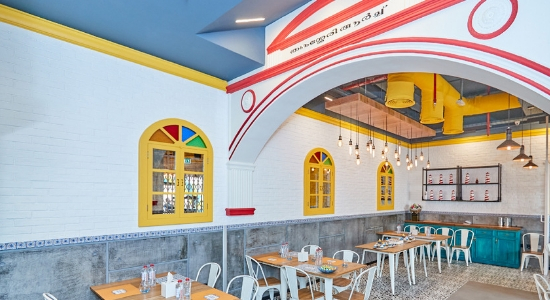
Tamarind Terrace Dubai
This is also an important factor to consider. It ensures that the restaurateur is working with someone or a team who is able to think of the larger picture - beyond just the ‘creative’ inputs. The design has the power to shape behaviour, define experiences and build a brand. Strategic thinking can take many shapes - from positioning the brand to defining the concept of the restaurant. A design professional or a studio that is able to bring designing thinking into the process enables a deeper and ultimately more successful impact.
Must Read: Four Essential Design Elements For Casual Dining Restaurants
Attention to Details
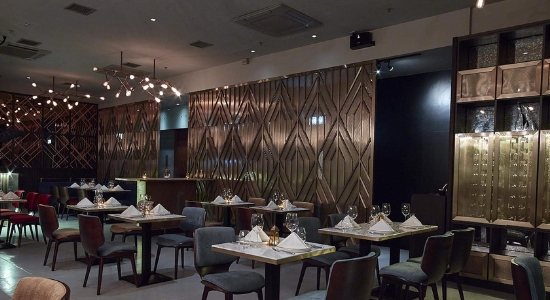
Daarukhana Hong Kong
While broad-based strategic thinking is important, what really makes a restaurant stand out is the attention to details. Whether it’s the furniture or the table setting or simply the way servers greet the patrons, the restaurant brand really comes alive through these multiple interactions. A designer needs to possess obsessive attention to detail - looking at every element not just from his or her perspective but more importantly from the point of view of people it is being designed for - servers, patrons and owners alike.
Ability to Work as a Partner and not a Vendor
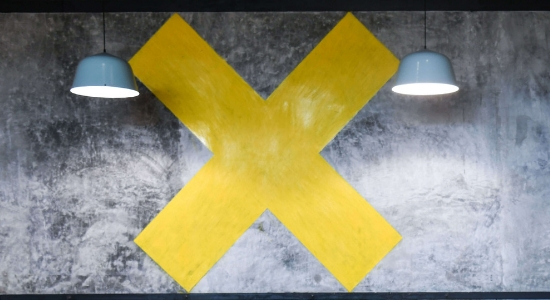
Millhouse Ahmedabad
If there needs to be a hierarchy of aspects, this would probably be the first. When designing your restaurant, it is important to work with a team which is bringing in independent thought, attention to detail and experience to the table. And when you do engage with such professionals it is important to enable them to come onboard as a thought partner, not a vendor who is executing.
Most successful restaurants are usually the result of a collaboration of a shared vision. While identifying who you want to work with - look for someone who shares your passion and enthusiasm about your brand and is as excited as you to build this together.
Original Thought

Tamarind Terrace Dubai
Probably the most obvious but in today’s Pinterest-driven age where every other trendy restaurant looks like something you’ve seen before - original thought is what ultimately stands the test of time. Look for designers who are able to present their work not with visuals but with a strategy or studios that define a principle or a vision that informs their work. Chances are - their process starts with a degree of original thinking and not a Pinterest mood board.
About the Author
Saurav Roy is the Design Director and India Partner for Idea Spice. He has been a part of the organisation since its inception. A graduate from the National Institute of Design, he works closely with entrepreneurs and organisations in India to create dramatic and visible impact.

Located at the prime location of Connaught Place,’ Kwality’ aims to create an inviting aura , serving a classic appeal of elegance.
Indulged in an iconic legacy, the design poses for retaining the magic of vintage dwelled in the designer’s edge incorporating intricate facets. The composition is concocted in a manner such that it is relatable yet nostalgic to a divergent user group.
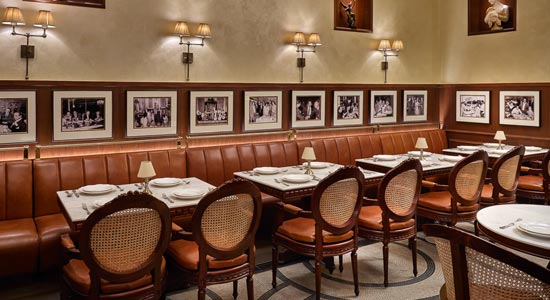
“The concept was to showcase the inherent traditional appeal with a touch of Victorian era where the ambience could elucidate its charmof bygone days. The vintage theme, as was required to be portrayed, was imparted via the muted shades and antique assets, sprinkled around the entire décor or setup,” shared Abhigyan Neogi, by pointing that the ideology that aided in creation of such a unique design, was to explicitly preserve the historical vibe of the arena and yet allow customers to delve into in-genuine ideas of design.
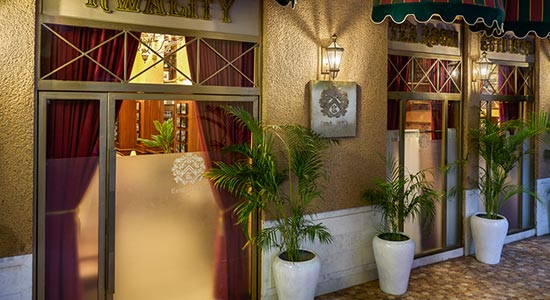
The client’s brief revolved around the core dogma of re-inventing the entire layout of the restaurant to an extent that it is presented with a fresh vibe while retaining the regal charm that Kwality withholds. This emerged as a challenge to the designers, to compose an environ that would be at par with the eminent name of the restaurant, amalgamating innate perspectives of contemporary design. The team brewed together elements of the golden epochs, merging it with the finesses of classical aspects and finally garnishing it with innovative royalty.
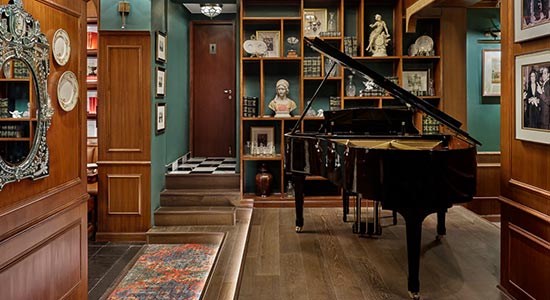
From the design of the external façade itself, users are given a defining debut with teal and maroon awnings supplemented with glistening frames of glass. On embarking into the interiors, the domain on the right, which is decked up in wooden veneer paneling and a Sabyasachi wallpaper-- is what first catches a prolonged glimpse. Placed at a step higher than the level of the commuting corridor, the functionality of the space is accentuated owing to the subtle change of level. Additional magnificence has been scattered on to the space with tan shaded seating and a contrasting checkered flooring. The diminutive facets of wall décor here that include images in defining black frames, delicately inspire the vintage aura of the interiors. Further on, a baroque grill patterned staircase leads the journey to the intimate mezzanine dining. Flushed with an ornate gypsum celling and a classic chandelier, this precinct has its innate sense of elegance tipped off with flamboyance.
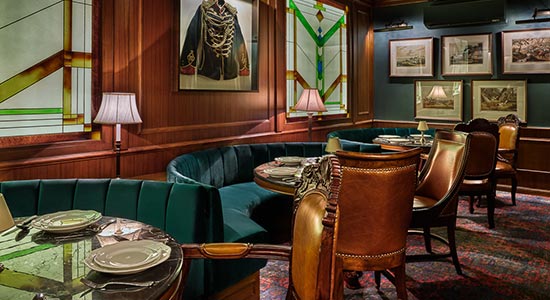
Subsequent to this arena, on the ground floor, the space on the left has been formulated into an exquisite alley with similar seating options and marble mosaic flooring. This relatively slender sector guides the way to a distinctly divergent region adorned with an antique piano and a contemporary mantle piece. Dipped in a shade of sea-green, the arena also houses luxurious booth seating with the intricacy of a beveled mirror in the milieu. Opulence with a requisite book shelf area is a fresh idea hot from the oven, that defines and complements the other facets of the conceived décor. The black and white checkered marble flooring along with other significant minute pieces, amplify the serenity of the theme and render this space with its indelibility.
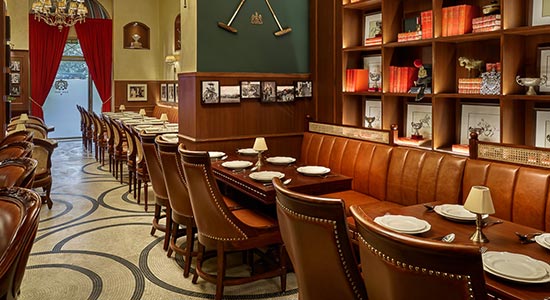
Novelty has been introduced into the space with a subtle taste through the inculcation of rustic facets including the piano and the magnanimous book shelf. Intrinsic detailing as is evident from the pattern of wallpaper, the awnings and the grill patterns is what splashes the entire composition with its awe-inspiring touch. Galvanizing the layout is the ambient lighting scheme and the choice of color palette that ranges from textured brown veneers to floral walls with a dash of sea green. Posing as a challenge, was the age of the structural members, which were unable to support the load of other membranes, and thus had to be strengthened with metal girders even for slight layout modifications.
Kwality, thus, portrays minimalism that has been implemented as a concept to conserve heritage and legacy with a dollop of ingenuity. Along with being pioneers of classic dining, the restaurant now poses with dignity for its stunning design and redefined extravagance.
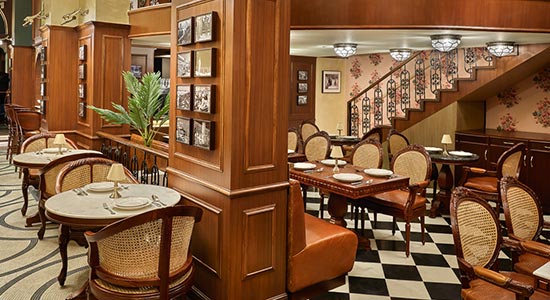
Fact File:
Name of the project: Kwality Restaurant
Design Team: Abhigyan Neogi, Chinmay Ajmani, SaumyaSharma, Aman Narula
Location: Connaught Place, Delhi
Area (Sq. Ft): 2250sqft
Completion date: 24th November 2018
Initiation date: April 2018
Photo courtesy: Ankush Maria
Text credits: Ar. Himani Ahuja

As travellers engage with history at the City Palace, Baradari heralds the future. Contemporary in its approach to gourmet cuisine and award-winning design, Baradari preserves all heritages of the centuries-old structures with contemporary elements derived from ancient Rajasthani geometrical motifs and local craftsmanship.
“At Baradari, we welcome guests from all over the world while staying connected to traditions and heritage.”
~ Office of the Royal Family of Jaipur
Baradari is luxurious, stylish, and a gastronomic delight.
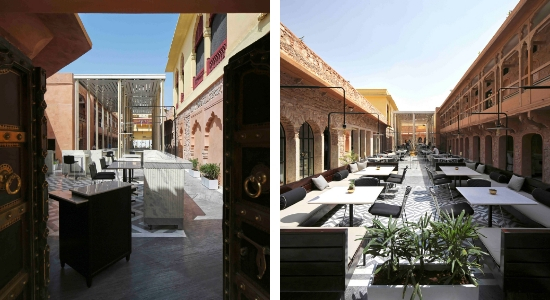
Baradari at City Palace, Jaipur, has won the awards for its F&B (food and beverage) space. The Royal restaurant sits within the oldest-walled quarter of the historic city of Jaipur abutting the City Palace Museum, which was built in the 18th century. A section of the City Palace continues to serve as the home of the Royal Princess of Jaipur Rajgharana, HRH Diya Kumari, now a minister in the State Government. The concept creates a balanced interplay of historical revelations and contemporary additions - both drawing from and interpreting the underlying Indo-Sarcenic influences of Jaipur’s architectural history.
Must Read: Four Essential Design Elements For Casual Dining Restaurants
Baradari provides a fine-dining experience within the historical precinct.
The Architecture – Then and Now
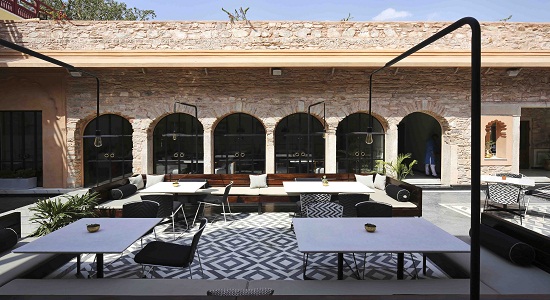
The old restaurant was accessible through the Jaleb Chowk, a prominent ceremonial opening to the palace precinct through its eastern flank. The Chowk and the main seating of the old restaurant were connected by the admin office’s courtyard through a narrow opening beside the toilet block, which opened into the courtyard. This was used as an opportunity to connect the Palace to a different side of the walled city by opening up the courtyard as a connector to Jaleb Chowk.
The project was undertaken by Studio Lotus as an exercise in exploring whether it is more important to recreate a version of what was or reveal what lay beneath the layers of paint to expose the historic shell and juxtapose that with contemporary expressions for traditional material and artisanal skills.
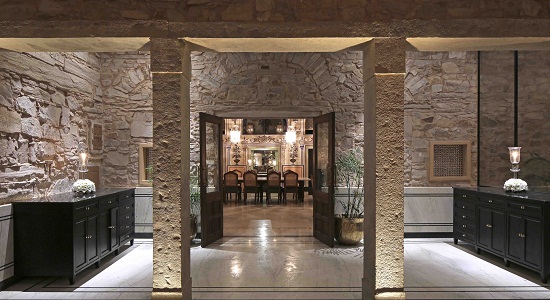
This manifested itself through two key gestures: the reveal of the original structure and its distinct materiality, and the creation of an important spatial node through a markedly contemporary take on archetypal Rajputana built element a Baradari, the free-standing pavilion.
Constructed as a finely crafted marble-and-brass pavilion, the Baradari (literally translated – a pavilion with twelve columns), functions as a spatial anchor for the courtyard, and in doing so also connects the public urban fabric with the private hospitality space. The lightness and contemporary expression of the Baradari pavilion creates a counterpoint to the surrounding heavy historic structures.
Another key intervention comprised of stripping back the old layers of cement plaster and paint to reveal the original rubble masonry. The original structure was then repaired and restored using lime mortar - its natural texture and intricacy of construction giving the shell a rich texture. Distinct dining zones were created on the periphery of the courtyard, connected to the open space through verandahs and enclosable vestibules along restored arches.
Also Read: Restaurants Must Have Proper Structure And Design, Else They Will Collapse
The newly-designed areas now accommodate 200 covers across its breadth of spaces comprising the bar, lounge, restaurant and private dining room, reveals Ambrish Arora, Design Principal, Studio Lotus.
The Décor
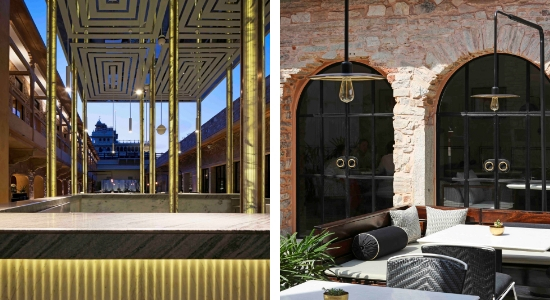
In line with the intent to create contemporary expressions of traditional craft, the restored rubble shell was populated using these new expressions – either through using new forms to implement them or through new manners of using them. Drawing from the rich Indo-Sarcenic influences of Jaipur’s architectural history, traditional crafts like Thikri, marble fluting and inlay, metal casting and foundry work have been incorporated in the space through new idioms – be it the intersecting halos of Thikri work on the walls of the dining spaces as a departure from its traditional floral motifs, or the movable marble Tables outdoors.
The expertise of the local craftsmen in marble has been also been displayed through the dado work, the fluting along the Baradari pavilion, the table tops, and the chadar-inspired water cascade in marble towards the Eastern end of the courtyard, which also helps cool the courtyard. Mild steel and brass have been used for bespoke lighting and folding fenestration. A frugal approach to execution also encouraged the team to repurpose and restore salvaged furniture from the Palace.
The Menu
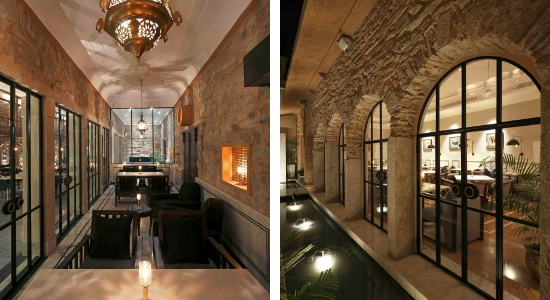
Baradari, the royal restaurant, serves iconic Rajasthani cuisines, like their legendary (secret royal recipe) Laal Maas, the young Maharaja’s favourite, Ker Sangri, a selection of tandoor, as well as authentic Italian pasta (made fresh), wood-fired pizzas, and contemporary global cuisines.
Innovations like Mozzarella Kachoris, Keema Pao Benedict, and Apple Jalebi, are a twist on traditional recipes and pair excellently with wines, cocktails and mocktails.
With a view of the Chandra Mahal, the Maharaja's residence at the City Palace, a meal at Baradari is an unforgettable royal dining experience.

Visual merchandising is multi-dimensional and hoteliers can choose from various ideas when designing displays. Most noticeably, merchandising is no longer considered an afterthought, it has emerged as something that restaurant and foodservice owners now consider a must – something as important as the kitchen design and the menu.
The key to designing a successful display is by conceptualizing brand’s value and mission onto the interiors and the menu. Merchandising utilizes product placement and displays to drive sales. It's an art form that relies on data and understands what drives consumers. When done well it pushes a brand narrative that evokes something aesthetically pleasing and relatable. It can also provide touch points so consumers understand how to interact with products, especially at a time when the customers are distracted.
The intention of visual merchandising is to create stopping points and increase customer’s curiosity. It's very effective to be able to do that during the festive season as it tends to be a pretty rich and deep merchandising environment. Below are the sure shot ways to ace the visual strategy:
Color Is King: Color is powerful; it can either make or break the store’s visual displays. The hotel or the foodservice joint might have an erratic display but if the colors coordinate well, the display can still be a work well together. Consider using contrasting colors or monochromatic colors for creating intriguing and eye-catching displays.
Start with Merchandising: Most new restaurant and foodservice joint incorporate merchandising displays and areas right from the start. Smart owners have their interior designer work alongside a merchandising consultant so there is no need to redesign your restaurant when you decide to put a merchandising program in place.
Use Menu as a Power Tool: Menu is the greatest marketing tool and should be used beyond simply listing the dishes and their prices. The average customer will spend around three minutes looking at the menu, so it needs to attract them to not only order the most profitable items but want to order more than just one. The menu should be designed in such a way that it entices the customers to come back to try other dishes.
Create a Focal Point: Where does the viewer’s eye focus on your display? Do their eyes move toward a specific location on the display or are they confused about where to look? Create a hotspot--or focal point for the customers. Examine your display from the customer’s point of view to ensure that they can easily view the hotspots and merchandise. Remember, the focal point is the food service and customer service of the restaurant, not a visual element you use to add to the story.
Tell a Story: Use powerful, sales-enabling designs to display the USP of the restaurant. By telling a story, the customer understands the offerings better and enables the buying decision.
Use empty space wisely: The section between the displayed merchandise and the ceiling is the most underutilized. This space can be used for many different things, like signage providing information about restaurant or the star staff members. You could also display customer testimonials with the customer’s name and picture.
Visual merchandising tells the story of a brand. It's not just about product placement in a store but also about enveloping customers in an experience. At a time of increased competition, thoughtful merchandising can be a key factor for increasing sales. Visual merchandising can create a deep connection of the brand with the consumer.

Has the food the diners ordered is being served at exactly the right time or cooked at the right temperature? Your kitchen is an orchestra with different team members choreographing the operations during lunch or dinner service to every last detail. What happens behind the scenes the customers never get to see. It takes a lot of planning. How well you can execute everything not just for one table at eight o'clock but for each table all the way through your service, matters. The most essential part for a kitchen is the speciality planning base.
Michelin-Star Chef Alfred Prasad talks about the essentials that need to be taken care of when managing the restaurant.
The Design of Your Kitchen
I've always been fascinated by the design – the most neglected aspect - and the architecture. For a chef, it is important to know if he will achieve 100 per cent efficiency with the kitchen space and layout. By layout, I mean making things within your reach and making sure there's no cross traffic.
Also Read: Enhancing The Customer Experience With Quality Bar Designs
Operate Kitchen Like an Officer
Restaurateurs often fail to give their kitchens the due importance but it is absolutely vital. When it comes to design, what’s more important is, the height and depth of the chair, to check whether the table does not move or rock and if the table has right height and space for the wine glasses, cutlery, depending on the concept. You need to operate the kitchen like an officer.
Also Read: How To Keep Your Restaurant Menu on Track?
Lighting and Acoustics, Don’t Miss on These
There are acceptable parameters within which your restaurant should fall. If you expect to have a busy dining room and you can't even hear the person in front of you because of the noise, the acoustics are very poor. These are the invisible aspects of a restaurant that actually becomes so much more important than how expensive your curtains are! If your curtains have a functional element of adding to the ambience then they're doing their job. But it's more for what it looks like you're actually making a mistake. The lighting certainly makes such a huge impact.
Click To Read: Menu Hacks For Online Food Delivery Business
Ergonomics, A Hugely Important Aspect
Is the cutlery comfortable to hold, is it the right way, the right shape for your menu? The plates - What thought has gone into the plate. I think the food can only do that much. A good plate can make an ordinary set of ingredients look outstanding. For the selection of the crockery, the cutlery set, the glassware all that becomes important.
You could have a signature scent in your restaurant., for example, which is unique to your brand. The music could be a specially-curated player that carries the brand or enhances the brand value.
There are so many aspects that should take more importance than I want glass or copper or metal and all of that. I think that's secondary.
Primarily, it should be about ergonomics, good design, practicality and functionality to take precedence.
As told by Michelin-Star Chef Alfred Prasad

As affluence and professional pressures overtake daily life, the experience of fine and casual dining is about so much more than what’s on the plate –it is guided by good service and increasingly, an excellent ambience. As an architect/designer, the challenge lies in delivering an immersive experience and not merely redoing a space to improve aesthetics. Group DCA's design philosophy behind conceptualizing restaurants is driven by a focus on spatial setting and augmenting aesthetics keeping in mind the client’s sensitivities and cost-effectiveness.
Having carved a niche in the hospitality sector, some of the design essentials lay utmost importance on the following:
Façade
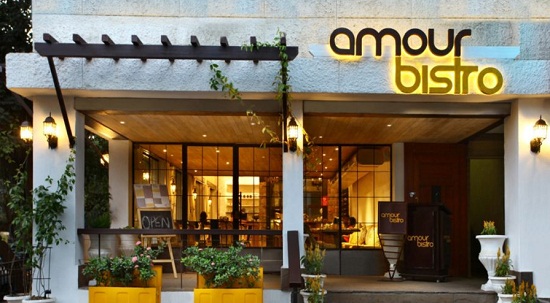
Photo Source: Group DCA
The façade of any restaurant casts the very first impression on the customer. It is one element that needs to reflect the aesthetics and individuality of the outlet and also engage with the users. Needless to say, it needs to be inviting.
Spaces
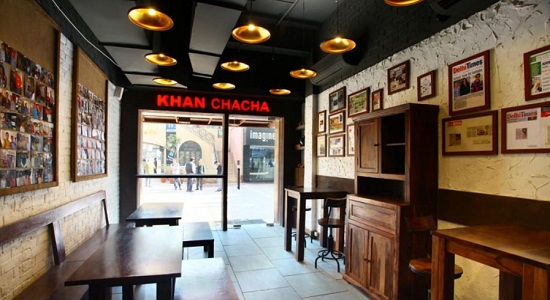
Photo Source: Group DCA
Every space in a restaurant should work together, to create a unique experience that will keep customers coming back. Space efficiency, smooth circulation and easy egress guide the layout of the dining room. Kitchens need a detailed design for clearing air through exhausts, maintaining hygiene through ease of cleanliness and ensuring the quality of food held in storage. Standards of safety, fire protection, ventilation and other building codes must be designed to work hand-in-hand.
Must Read: Restaurants Must Have Proper Structure And Design, Else They Will Collapse
Lighting

Photo Source: Group DCA
Lighting forms a crucial part in creating the overall ambience. Sunlight imbues restaurants with a fresh lightness that is essential to daytime entertaining. As the day progresses, warmer lighting can work with the setting sun to create an ambience that is best suited for a coffee or sundowner. Warmer tones craft mellow, casual spaces, while white fluorescent lighting creates a bright, clean feeling.
Detailing
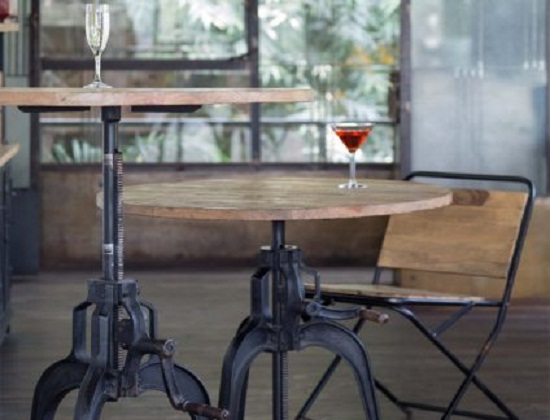
Photo Source: Group DCA
Starting with the entrance and percolating down to the tiniest detail, a restaurant must reflect the character of its owner/brand. People are increasingly looking for spaces that reflect their individual interests. The integration of individual motifs and quirky elements helps the users to relate to space better and develop a sense of belonging to space.
Conclusively, the experience of a customer is the ultimate test for the design of a restaurant. Every brand is unique and has its own USP, targeted towards a more specific audience. But, it is also popularly stated that a function or a notion of something can be productive, only when the space it is placed or conceived in, allows it to. Group DCA strives to achieve this by striking the perfect symbiotic relationship between branding, spaces, and most importantly, customers.

The article is contributed by architects Amit Aurora and Rahul Bansal of GroupDCA.
GroupDCA is an award-winning architecture and interior design firm and is spearheaded by Amit Aurora and Rahul Bansal. The brand has to its credit, remarkable, award-winning, widely acclaimed projects across diverse typologies such as residential, retail, hospitality and workspaces.

West Bengal’s famed Taj Bengal Kolkata reveals its highly-stylized new fine dining restaurant, Cal 27 elevating the luxury experience for guests and diners.
Designed by Studio HBA the restuarant infuses the distinctive cultural elements of Kolkata throughout its design, carefully weaving inspirations from the city in each space.
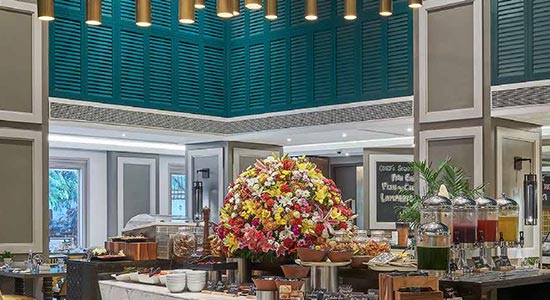
“The city of Kolkata is the soul of east India – a vibrant hub of culture, commercial and academics, Kolkata is known as ‘The City of Joy,’” said Rahul Shankhwalker, Partner at Studio HBA.
The richness of the city is felt throughout the Cal 27 space-touching The Hub and The Heaven outlets within it to coalesce a storied design.
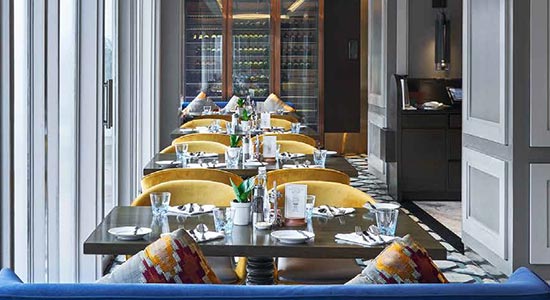
The designers have focused on procuring local elements and assembled them in artistic ways to pay homage to the setting.
“Having an opportunity to design within India’s cultural capital was a humbling challenge our team was ready to take on. Coupled with the change to work within the illustrious, Taj Bengal hotel made this project one of passion and perseverance,” added Shankhwalker whose team spent more than a year studying the location, talking to its people and simply absorbing all that this mesmerizing city had to offer in order to create a restaurant space worthy of its location.
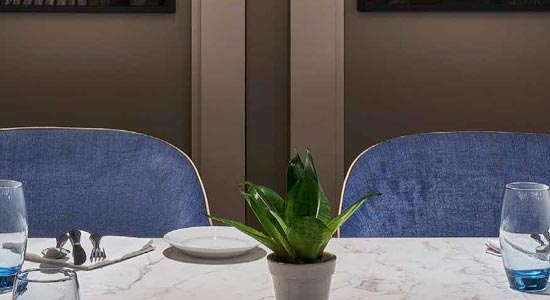
Designed in a lively blue and yellow color palette, the restaurant represents Kolkata’s signature taxi cabs while black and white prints display iconic Kolkata elements.
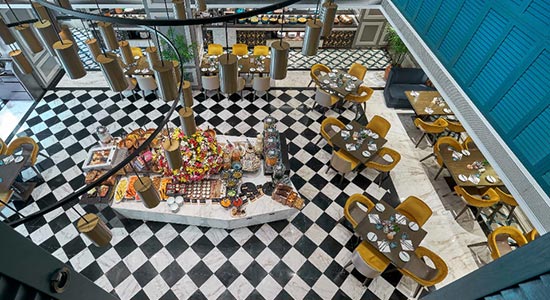
The blue and yellow colors appear as velvet and leather covers for the furnishings. Wooden window shutters were inspired by the rolling shutters of Kolkata while table legs took a nod from the four-post beds found in so many of the homes. Old Kolkata Rajbaris served as inspiration for the checkered floors and courtyard concepts and the city’s iconic chai tea cups were translated in to lamp shades.

When thinking of a restaurant you often consciously think of the menu. Is the food, however, enough to create repeat business from a customer? While some will argue yes, the majority will know that there is more to the dining experience than just the food. It's also the interior design of the restaurant that influences repeat customers.
Celebrity Mixologist Arijit Bose, when asked about the design of full service restaurants said,” It can make or break your dining experience. The inside of the bar has gained much prominence in the past few years.”
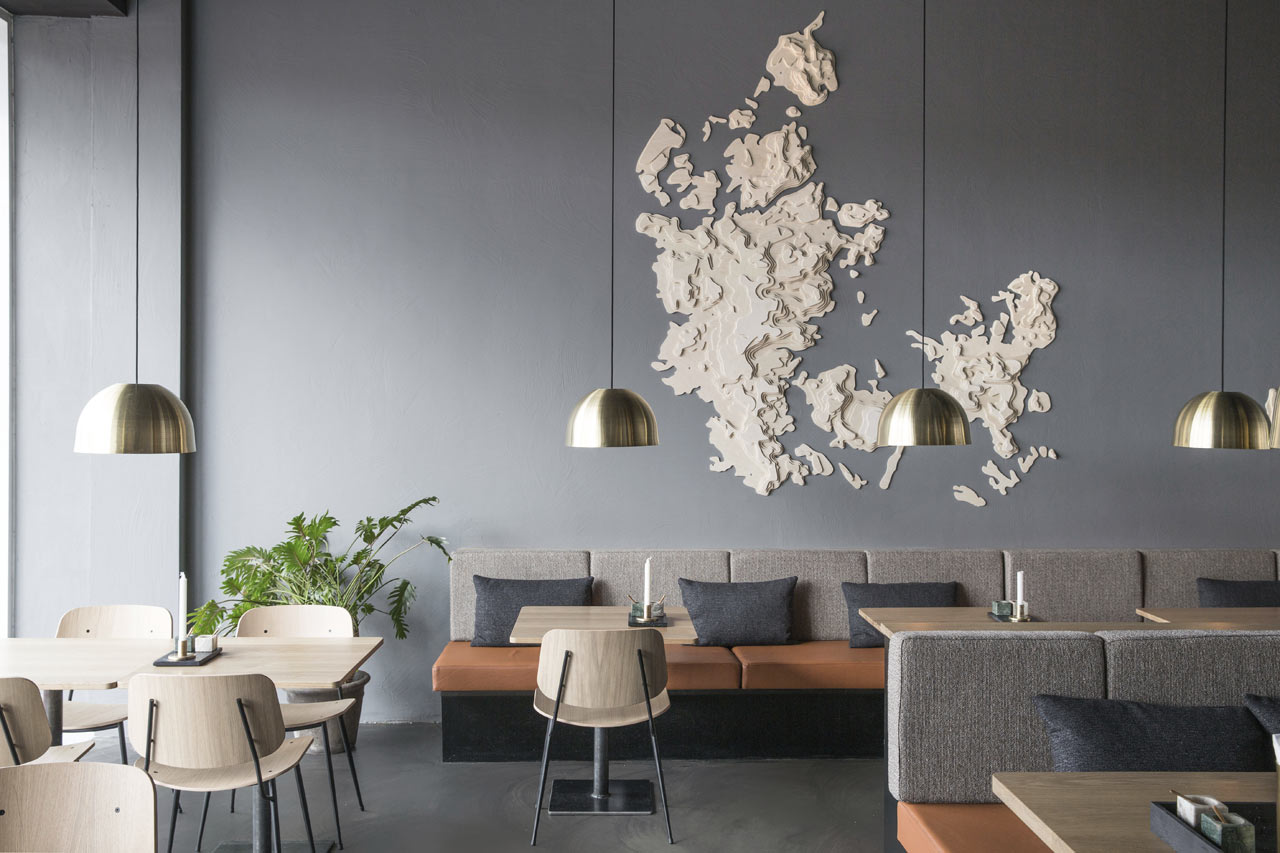
Play it Well With Furniture’s
Since the online home décor and furniture market is no longer a niche segment, differentiation and a competitive edge are imperative. Keeping this in mind, Natasha started Bent Chair in Delhi in August 2016. From the shape and squashiness of dining chairs to the exact textures of the wallpaper, Natasha reveals,” It takes a lot of knowledge that goes into creating the interior of a restaurant.”
A well structured dining room is more than just tables & chairs. It sets the tone and ambiance of your restaurant. Creating an amazing interior design is anything but simple. There are thousands of factors to juggle ranging from your restaurant, bar or cafe’s style, to making the interior as beautiful and decorative as possible without disrupting the staff’s workflow.
Commenting on the same, Natasha said,” It’s not how the equipment looks but how it is wired.”
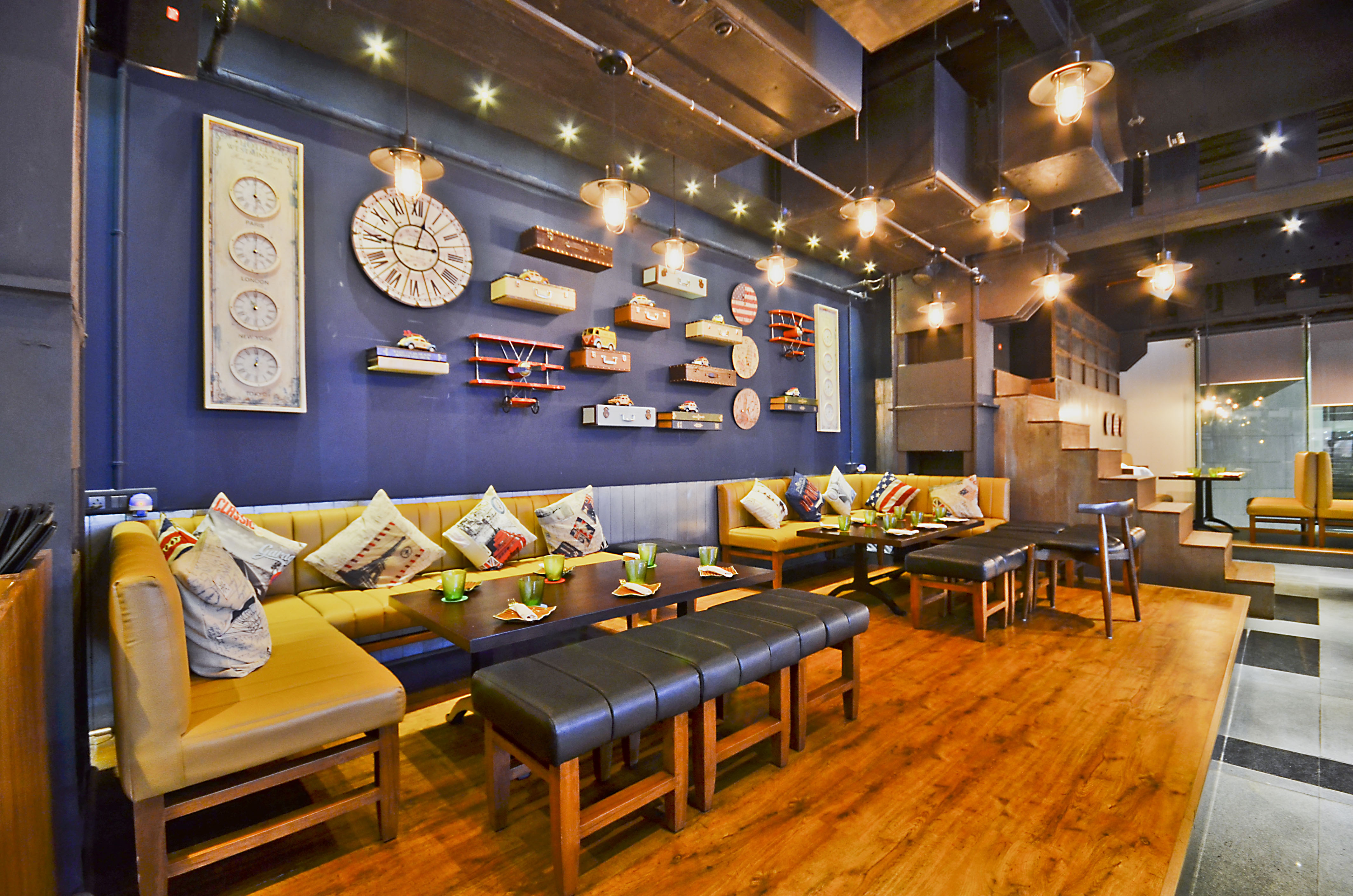
The Tricks & Actions
From a psychological point of view, one of the key aspects to a restaurant’s design is the lighting. It has to be soft and flattering to make guests feel comfortable so that they are confident and relaxed and enjoy their stay in the restaurant.
“We tend to do this through soft ambient lighting to complement the more targeted architectural lighting and also to suit the time of day. In my experience, the worst lighting is when there are just down lights over the tables that can cast shadows over diners face. This can be very unflattering for guests and make them feel uncomfortable”, said Arijit Bose.
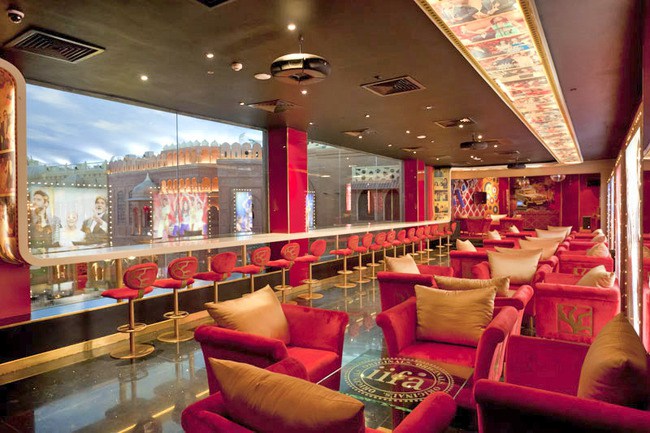
What Makes a Great Restaurant or Bar
It is all down to good planning of the place and making it work, something that customers would not be aware of. Then it is about atmosphere, from lighting to music. People have to feel relaxed, but before we start on a project we research extensively into the offer and the location, making sure that what we are designing is relevant to the local or targeted demographic
When asked about to what she attributes her designing skills, Natasha said,” Education, Travelling and Learning from outside have helped me broaden my knowledge space about interior decors.”
The ongoing trend has completely tilted towards eating and drinking out and thus restaurants and bar owners is trying really hard to make it a holistic experience for their customers.

According to the Guinness Book of World Records, Botin Restaurant in Madrid in Spain is the world’s oldest operating restaurant. Started in 1725 and famous the world over, even Ernest Hemmingway mentioned the restaurant’s signature dish cochinillo asado (roast suckling pig) in his 1926 novel The Sun Also Rises.
To build a lasting business of that nature, is probably every entrepreneurs dream. While every success story has its own secret ingredient, there are some prevailing global trends that I would advise every budding restaurant owner to think about.
The Consumer is changing and so is the industry: The consumer in India & globally has changed dramatically. Today our dining out and social habits have changed. Dining out is a social activity and is not restricted around standard notions of lunch or dinner. We go out and eat when we want to. And increasingly we don't select our favourite places according to cuisine - most new formats blend and mix a variety of cuisines and dishes that would have been unheard of a few years back.
Back to basics: Whilst there has been a dearth of experimentation in food, cuisines, plating etc – there also has been a fairly ridiculous level of food design for the sake of it. When done without any context or thought- simply for the sake of making the menu look “different” it doesn't work. What works and will always work is a clear back to basics approach- understand your food, your approach and your consumer and build it around them with great service and hospitality and it will always work.
Multi use, scalable formats: An important consideration in any restaurant or f&b design is the understanding that we don't go out just to eat - it’s to work, to conduct meetings, to socialise and so much more. This derives the principle that restaurant design should be multi use, scalable formats that have the ability to change according to the time of the day, and the season. This ensures that in the long run, the format has the potential to remain fresh.
Use Technology effectively: Technology can be a powerful tool to not just create a more efficient system but also an effective way of connecting and building deep knowledge of your customers- for example: a. Cloud based POS systems that harness AI / learning systems to effectively understand what consumers are ordering and therefore get a deeper understanding of your business; b. Wifi systems enable you to get rich consumer data that can be used to create marketing systems that are completely non traditional - for example building localised area based offers for specific consumer groups c. Smart loyalty systems that are non obtrusive and can create a umbrella of inventive and value beyond just the dine in location.
Good design is invisible: When we have a great experience - we remember the experience as one cohesive event. When we have a bad experience that’s when we notice that the service is bad or the food was overcooked. Good design is truly invisible and when it works, it makes for a memorable experience. Over design and design without any thought - whether its the interiors or the cutlery or the food - will always have a short shelf life.
Deliver experiences – delivery: This is an area of enormous opportunity for all f&b formats - regardless of the scale. It allows for the business to reach their consumers homes. Too often a great dish falls flat on its face - literally - when it reaches our homes. The solution - design food around the delivery experience as well. It is here to stay and by ignoring it - you are doing it at your peril. Smarter packaging solutions to specialised delivery menu there are several simple ways in which your business can offer a great experience for your consumers at their home.
Mix Usage by blurring boundaries - retail / events: The last and final note is something that is a global trend across retail, entertainment and even real estate. As consumers change, spending habits change, so do our impulse purchases. As a physical destination, you have numerous opportunities to engage with your audience. IF you've covered all of the 6 above , then extend your brand beyond the traditional boundary of f&B. Retail for instance becomes a natural extension of your brand but can only be successful be deep integration with design and operations and not just by putting up a shelf in the corner to sell produce.
While these seven are in no way an exhaustive guideline, they certainly can be treated as a starting point to think of to make your business ready for the future.

Disrupting the status quo
I think we are bringing a bit of the corporate edge to design which seems to be working very well for the projects and has been appreciated by our clients as well. Let me explain. Designing ideally is how you start the process. We burn the midnight oil and sketch and build it on paper. However, come morning and the ideal design needs to be broken down to a process. It needs to be documented, there needs to be an order to the drawings, a process to the communication and only then can a design be rendered the way it was imagined.
Our 13 odd years in the industry have taught us that the lack of implementation is what kills design in most cases and causes a discord amongst the client and consultant. I think we have successfully managed to bridge that gap and it has worked to our advantage. So to sum it up, our ability to finally bring design down to a process and quantify the deliverables-without diluting the design in any way is what will cause a ripple in the status quo.
Practicality of biz
Apart from the projects we have done and the spaces we have created, which we are deliriously proud of, I am extremely proud of the fact that I've been able to run my company like a business and yet not let the practicality of running an organization dilute design. We design from the heart and commission it ruthlessly. The ability to justify both, I believe has not only been my greatest achievement but also my greatest strength.
Overcoming challenges
There have been many. We came to a point in 2012 where we lost everything we had worked for since the beginning of my career and came crashing down and owed the market an amount that took us two years to pay back. That was an all time low. I was struggling to just stay afloat every month. The high point was paying off all our debts, and bouncing back and bagging some of the best projects the country had to offer in F&B after that. But what I feel was my biggest high point was managing to live those two crushing years with dignity and pride with my head held high and emerging out of it without anyone's help. I talk about it with a smile today but I remember living it out on my own that time and it was extremely overwhelming on most days. That experience has made me who I am today.
Expansion is on radar
So far our business has concentrated on design consultancy which does not require any external investment per say. We are however looking at floating two new ventures this year. One will be This It It Homes which will again be a design consultancy for houses and the other company will design and commission light installations. There will only be one of a kind and will be custom made to the client's needs and the space. We will see what kind of a growth pattern that has over this year and hopefully, we will be raising some external investment for that. We hope to take the brand global and we are already working on a few projects overseas.
Boasting the design
To take the brand global and represent India as a state to be reckoned with in Design. We hope to do product design, start a division for Interior styling, commission art installations, do concept based hotels and of course, my first love, put a restaurant designed by This Is It Designs in every corner of the planet. I want the name This Is It Designs to be addressed as a design firm that did its bit in tying together the countries and continents and cities in a small way. It's time that the lobby for Unity stood taller and stronger than the Lobby for War. Art and design plays a key role in that and I am hoping to contribute to that.

Ponchies wanted to create a special place where one can satiate his/her taste buds, without accompanying overload of worry, guilt, etc. Where food lovers could discover and celebrate gastronomic delights, made with the finest ingredients,blended with glorious tradition and some novelty and last but not least, a good deal of tender loving care of the chefs
What passion brought you into restaurant business?
Good food has always been my passion. Further, association with food industry for almost two decades has added to my overall exposure and understanding about the dynamics of good food. And, I have extensively travelled across the country and discovered food served in lanes and by lanes in all aspects and then in March 2014, I decided to make an attempt in offering specialist food in selected cuisine. The fund was managed through our own savings.
What are the different types of cuisines served at your restaurant?
Currently, we are serving Awadhi, East Indian (Rolls) only.
What are the things you take care at kitchen for cooking?
We use Rice Bran oil in all preparation, best Basmati rice across globe for Biryani, pure ghee for all sweet preparation, unpolished pulses and home grinded spices. The designing was done keeping in mind our tag line “Eat without Guilt”.
Who are your target customers? Do you see any threat from any of the brand?
Our target customers are across different age group; however it is for people who genuinely weigh hygiene and taste at par. Ours is a clear positioning of a specialist.
Our competition is from organised sector serving similar offering with same quality consciousness and with multiple footprint.
What is your marketing approach for the festivals like New Year which is coming?
We are planning a tactical offering on select key items.
According to you, what are the latest trends in F&B industry?
The latest trends are uniqueness, innovation, value creation.
What is your expansion plan?
Our expansion plan is focused around Gujarat followed by Maharashtra.

In an exclusive interview with Franchise India, Manuu Mansheet talks about the design, the art aspect before starting a new project.
I did my schooling from Modern School (Barakhamba Road) and then completed my graduation from Sri Venkateswara College (South Campus). I also did an MBA from Fore School of Management (Delhi).
It was art that attracted me towards itself. From the very childhood I was very artistically inclined and always yearned for a creative and unique career and destiny played the right role. I started designing, styling, and decorating at a very young age. I am a self taught person & got an opportunity to go abroad (Netherlands) and get trained at an IKEA pilot store, and subsequently work at 2 stores of IKEA in UAE.
When starting a new project I hear my inner voice, is it a project that I like or love to do once I am clear about that I act myself busy and geography, location, style, budget are the factors that I consider.
There have been many milestones and many interesting projects where I learnt a lot, added a lot and created a large body of very satisfying and commercial work like Tatas,Godrej, Bharti Walmart, Alsorg etc. But my first commercial design project was displaying art for an exhibition at Taj Palace hotel. This was also my stepping stone to future.
My day could take me to site visits, meetings, shopping for props/accessories etc. Mondays are generally reserved for teaching. Evenings go for art openings, theatre, etc. My mother is a major influence in my life. I have learnt a lot by just watching her in my growing up years.
When we are talking of creating an experience or environment for a service, a store and a restaurant, it has to appeal to our 5 senses. It is the senses which experience the food, the ambience, the design, the art and many more things at a place or in a restaurant.
It’s just a gift- to be able to visualise a solution or idea and then be able to think out of the box and do things. For a new graduate I would say think out of the box, break some rules and take risks, rewards will follow you.
In my opinion a restaurant goes through a lot more usage/wear and tear than a normal household/office, etc. hence good quality material and finishes stand a longer lasting chance.
I am in the process of doing up some heritage buildings, restoration work excites me and I am also doing some projects for the Govt. I renovated an old cafeteria once and it was a bit challenging to change the user’s mindsets and satisfy the staff. Nobody was keen to change old methods but ultimately it became one of the most buzzing lucrative businesses.
It always works to be practical and functional. The design should be stylish but not OTT (over the top).I hate vulgar money display and gaudy tastes. Being careful and sensible with budgets is very welcome but being stingy and cheap.
The biggest decision is on Look. Most clients are very reluctant to experiment. A promoter may sometimes want to compromise and pack more number of patrons where as I; a designer may want space for easier movement or features/props etc.
A restaurant should focus on five things, art, linen, flowers, candle and a wow menu card. A restaurant should always select a designer on his past experience, projects done and the passion for the art and design. I design restaurants according to the experience and what do particular restaurants want for his customers to feel, what is the type of cuisine to be served, who will be the target audience the restaurant is targeting.

We all know that restaurant business is not an easy job. Every other day new restaurants are opening with new concepts or themes, this leads to competition in the industry. As a result, restaurants cannot thrive without making small changes from time to time.
In recent times, revamping of the restaurant industry became common as it increase the restaurant sales and performance at the same time. Revamping does not only mean interior and exterior redesigning, but also change in the menu of restaurants. Restaurants try to conceptualise the whole idea and make it new in terms of colour, design and otherelements..
On the same note, Pravin Malkani, MD of Hotel T24 Residency comments, “In a way, revamping a restaurant ends up giving a new identity simply because customers learn to identify with a restaurant through its ambience, specialised menu, any special offerings, events etc. Every few years, restaurants may invest in revamping simply to keep the inflow of customers and offer them something new and exciting”.
Redesign the Menu
In a way, this is the strategy of the restaurant owners as customers are always interested in something new, and reconditioning always gives themwhat they want. . The main remodelling is done of the ambiance, colour, texture etc. Menu is something which customers always look forward to like special offers, new cuisines both in food and at bar.
There are many restaurants which have responded to this trend. “A constant change in menu is always a good idea. Weekly and monthly specials are regularly introduced at MeSoHappi using seasonal ingredients which keeps our customers interested and coming back for more since there is always something new to look forward to. Guests often look forward to the specials menu, while always coming back to have their favourites.” Aarathi Arambhan, Curator, MeSoHappi and The Captain's Table.
Similarly, Nishant Mitra, Chef and Owner, Eddies Bistro said, “I've changed certain elements and even added few things to give a new and more spacious look to my restaurant. To begin with we've done up the backyard area which is a great place to hang out in the afternoon and evening. There are beautiful umbrellas suspended in the backyard area which lights up at night. I've also set up community tables outside where a large group of people can share their seating space and interact with each other too. The idea is to keep it simple, yet make subtle changes which are noticeable. Our menu has also undergone a significant change with more small plates being at the forefront.”
Things which can make the restaurants look better are colour, lightening, music in the background because it creates an overall impact of the restaurant. During remodelling materials, shapes and textures can enhance the dining place’s sound environment. In the same way, colour, lighting and texture of the restaurant should be given equal importance.
Everybody likes a change, but it has to be done smartly as well. Restaurateurs will always bring something new for the customers to keep them engage with their restaurants. Even a food delivery model Freshler, Co-founder, Razat Choudhary said, ‘We are start-up and have been operating for only six months so we don’t need to revamp but yes for sure we need to accelerate to stay ahead in competition. Need of the hour is to retain customer and we are focused to do it by providing wow food experience’.

Hyatt Place, Udyog Vihar is an ideal place for both business people and travellers in Gurgaon. Known for its spacious meeting rooms which are perfect for small corporate and executive meetings, training classes or group gatherings, it is located in Gurgaon, 20-minute drive from DLF Cyber City, MG Road, City Centre and major commercial hubs.
Hyatt Place has some phenomenal features- a 24/7 Gallery menu tendering freshly prepared meals with a variety of local and regional specialties.
The 24/7 Gallery Market tenders grab and go items from freshly prepared sandwiches and bakery items encompassing pastries, cupcakes, water juices and soft drinks. The gallery market is perfect for quick bites to feel refreshed and recharged. The coffee to cocktails bar is the ideal place to meet and enjoy evenings with friends and colleagues while relishing a wide range of innovative cocktails, international and local beers, wines and premium spirits from across the world.
Gallery Café has an overall seating of 148 seats which focuses on being giving a feel of casual and open. It has a subtle combination of PDR, indoor and outdoor seating, with a blend of lounges, sofas and chairs.
Hyatt Place also has a concept of lavish open kitchen with equipments imported from Middle East and the unique flexible private dining rooms to cater groups around 10 – 30 guests are the key design elements contributing to the rich ambience.
The architecture allows plenty of natural light during the day and splendid views of landscaped lawns. A uniting motif element is replicated in the detailing of selected jaalis, etched glass and fabric upholstery which enriches with the warm tone of the stone and carpet flooring, cladding and pattern timber backdrop works.
The interior design was led by Christian Merieau, MD, Samuel Creations, Dubai and day-to-day coordination was handled by their Sr. Project Manager, Khaja Mohammed Javed. Entire material selection is guided by the interior designers. Wooden partitions, marble-honed crema marfil tiles and stone clad buffet counters are part of the finishes.
With P Kauffman fabrics upholstery, Taiping carpets flooring, selected curtains and artworks the highest quality of materials has been used.
The hotel boasts of 176 guest rooms that come with modern amenities catering to the needs of business and travellers. Each room features minimalistic decor, contemporary furnishings fused with a mix of modern design including natural wood finishing and textured glass.
The other in-room facilities are flat-panel HDTV, a comfortable cozy corner sofa-sleeper, hairdryer and tastefully designed bathroom. The guests can also relish the swimming pool, parking, laundry services and Wi-Fi during their stay.
It has high traffic hours at all the meal periods, primarily during breakfast with all resident guests and during dinner with fair mix of both resident and non-resident guests.
The rough estimation of the hotel which delivers facilities in addition to designing, finishing, furniture, equipments and furnishing expenses is upwards of Rs. 6.5 crores.

Pamphilos means "Friends of all", is a casual dining restaurant located at GK-1, N block Market and is spread across 3800 sq feet. It has two floors including an open seating area, creatively visualized the place to resemble a homely and ornate setting with clean lines and minimalistic design philosophy.
Pamphilos has a different but beautiful décor. The decor and feel of the place is great, especially the terrace which will be amazing for any weather. It is quirky, elegant & beautiful.
The wall art is perfectly done. It describes the personality of women. That is why we have so many feminist artworks and by keeping all these things in mind, we came up with this concept.
Designed by Shiren Kaur, the seating arrangement is done with mix and match of everything. It has couches, sofas as well as fine ding table. For instance, if you want to have coffee you have coffee table, for fine dining you have table for three four and even 12. It has 75 seats in total and very comfortable and relaxing.
The terrace area is amazing with colourful potted plants set against a white background. The place comes alive at night with brightly lit lanterns lending an enchanting aura to the whole space. It has highest traffic is at night during the weekend after nine. “We have music-themed evenings every night, including live gigs on Wednesdays and house music on Saturdays” shared Sourav Deshwal, Owner at Pamphilos.
The menu is vast and the food is certainly appetizing It is a mix of flavours around the world, though the main emphasis on European cuisine. “We are more towards European cuisines. Earlier we have 40 items in our menu but now we have 80-85 items in our menus as per the recommendation of our customers. And also, it changes within three to four months duration” pointed Deshwal.
One crore is the budget for this outlet. A lot is paid to the artists and done many expensive chandeliers, he added.
Copyright © 2009 - 2025 Restaurant India.





